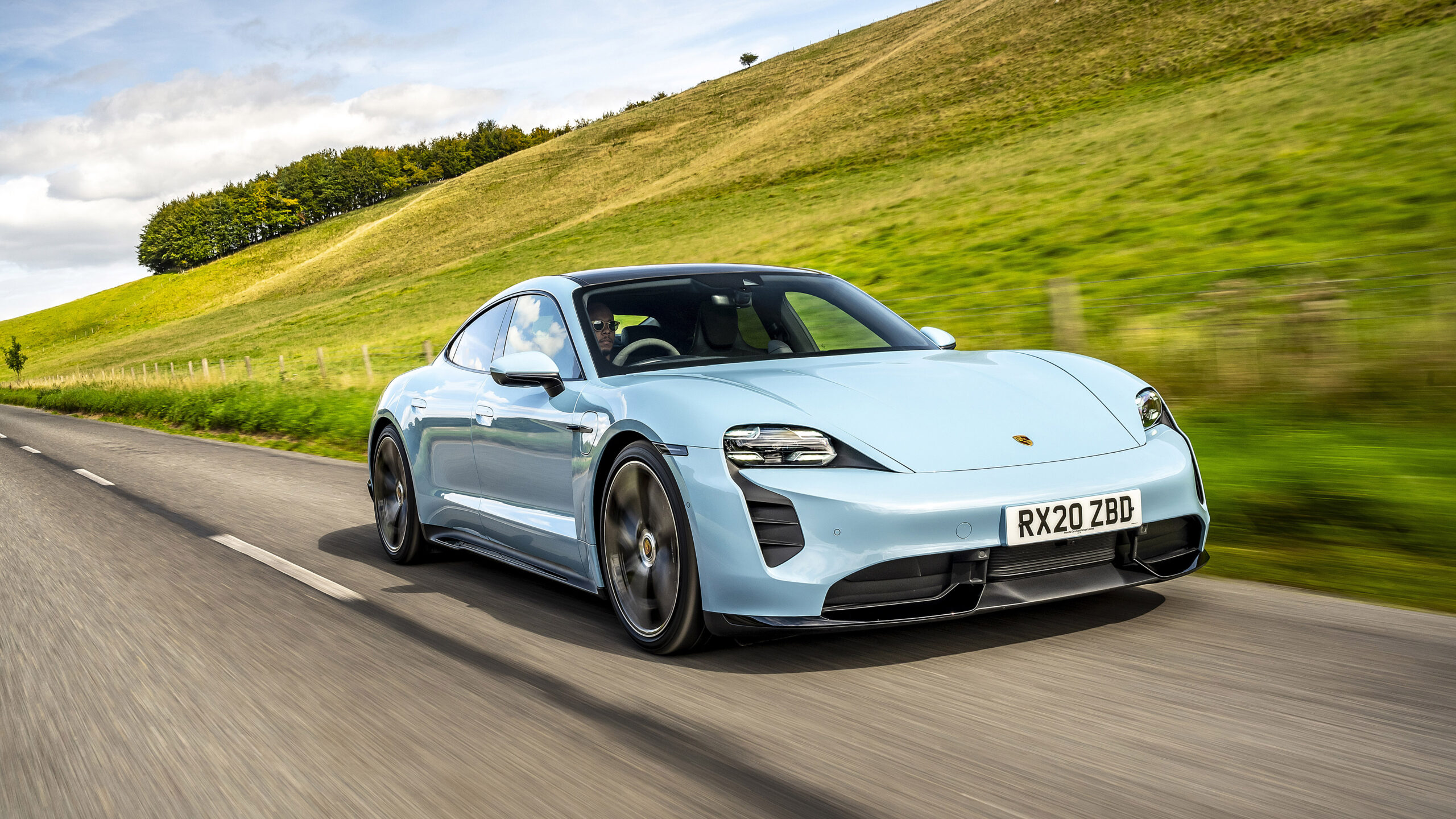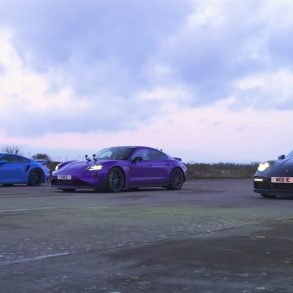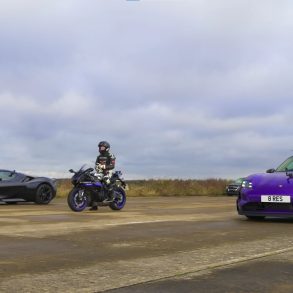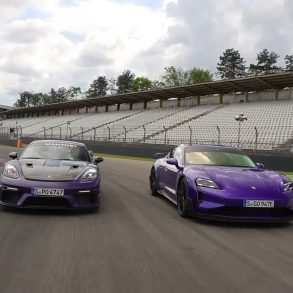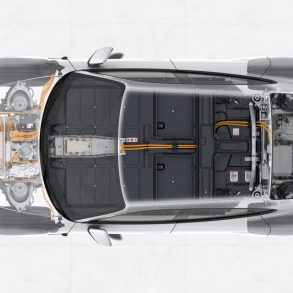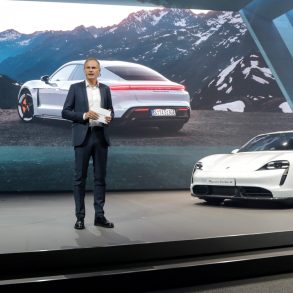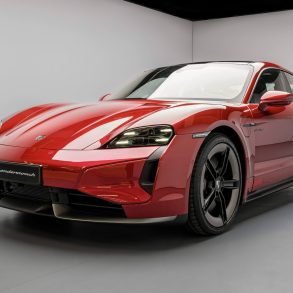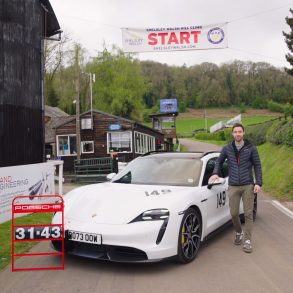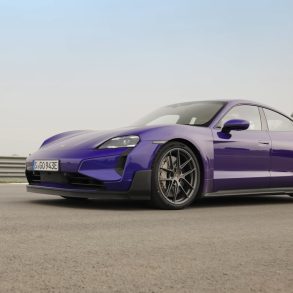1st Generation Porsche Taycan (9J1) Story & History
Official photos: Turbo & Turbo S 2019 September 4, 4S 2019 October 14 / Premiere: 2019 September 4 for invited quests in Germany, China and Canada, publicly 2019 September 12 at IAA Frankfurt motor show / Market launch: Turbo & Turbo S 2019 September, 4S 2020 January
Taycan Technical Specifications
| Variant | kWh | power | torque | range highway | range combined | range city | 0-60 mph | 0-100 km/h | 0-100 mph | 0-200 km/h | mph | km/h | kg | lb |
|---|---|---|---|---|---|---|---|---|---|---|---|---|---|---|
| 2020 Taycan | 79.2 gross / 71.0 net | 300 kW | 5.4 sec. | 143 | 230 | |||||||||
| 2020 Taycan + | 93.4 gross / 83.7 net | 350 kW | 5.4 sec. | 143 | 230 | |||||||||
| 2020 Taycan 4S | 79.2 gross / 71.0 net | 320 kW / 390 kW (Overboost) | 471 lb-ft / 640 Nm | 198 mi / 320 km | 206-252 mi / 333-407 km | 237-289 mi / 382-466 km | 4.0 sec. | 155 | 250 | 2,140 | 4,718 | |||
| 2020 Taycan 4S+ | 93.4 gross / 83.7 net | 360 kW / 420 kW (Overboost) | 478 lb-ft / 650 Nm | 226 mi / 365 km | 239-287 mi / 386-463 km | 270-325 mi / 435-523 km | 4.0 sec. | 155 | 250 | 2,220 | 4,894 | |||
| 2019 Taycan Turbo | 93.4 gross / 83.7 net | 460 kW / 500 kW (Overboost) | 625 lb-ft / 850 Nm | 230 mi / 370 km | 236-279 mi / 381-450 km | 268-308 mi / 432-496 km | 3.0 sec. | 3.2 sec. | 6.9 sec. | 10.6 sec. | 162 | 260 | 2,305 | 5,082 |
| 2019 Taycan Turbo S | 93.4 gross / 83.7 net | 460 kW / 560 kW (Overboost) | 772 lb-ft / 1050 Nm | 211 mi / 340 km | 241-256 mi / 388-412 km | 269-293 mi / 433-472 km | 2.6 sec. | 2.8 sec. | 6.3 sec. | 9.8 sec. | 162 | 260 | 2,295 | 5,060 |
Year is the year of the start of production, not model year.
Range according to WLTP Worldwide harmonised Light vehicle Test Procedure
Weight is DIN weight of German versions with standard equipment. DIN weight = car with 90% fuel, no driver, no cargo.

On June 8, 2018, the name “Taycan” was announced. It can be roughly translated as “lively young horse”, referencing the imagery at the heart of the Porsche crest. The internal Porsche code for the Taycan series is 9J1 and the Volkswagen code is Y10. The sedan is Y1A and the Cross Turismo Y1B.
From Mission E in 2015 to Taycan in 2019
At some point it was decided that the Audi “e-tron GT” will be based on Porsche’s electric sedan. This meant the exterior styling of the Taycan could not be made exactly as cool as seen on the Mission E concept car. The Taycan had to serve for other Volkswagen Group brands aswell, not definitely limited to Porsche and Audi. Compared to the Mission E, the Taycan has the front overhang a bit shorter, the roofline a bit higher and the wheelarches less bulging. It has “normal” exterior mirrors and “normal” rear doors.
While Audi is creating its own version based on the Porsche Taycan, Porsche is using 2 Audi electric car platforms for new 2021 Porsche electric cars. CEO Oliver Blume has said “If we had to cope with the challenges ahead on our own, the costs would be around 30 percent higher”. The cooperation makes electric Porsches and electric Audis significantly cheaper.
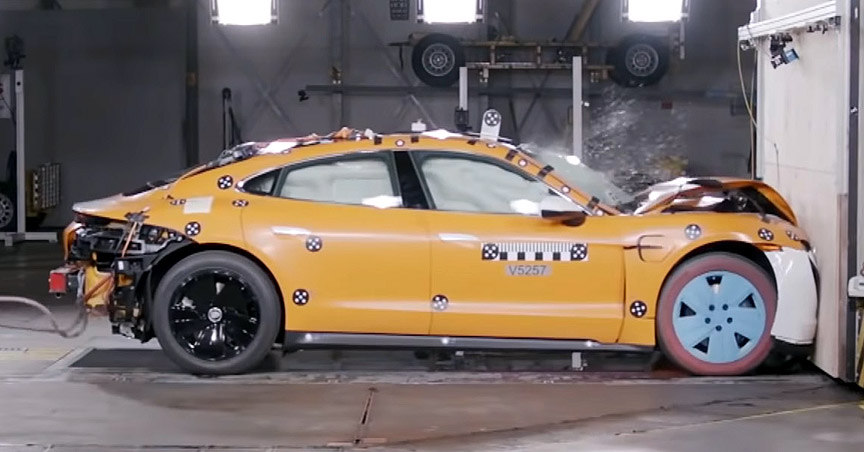
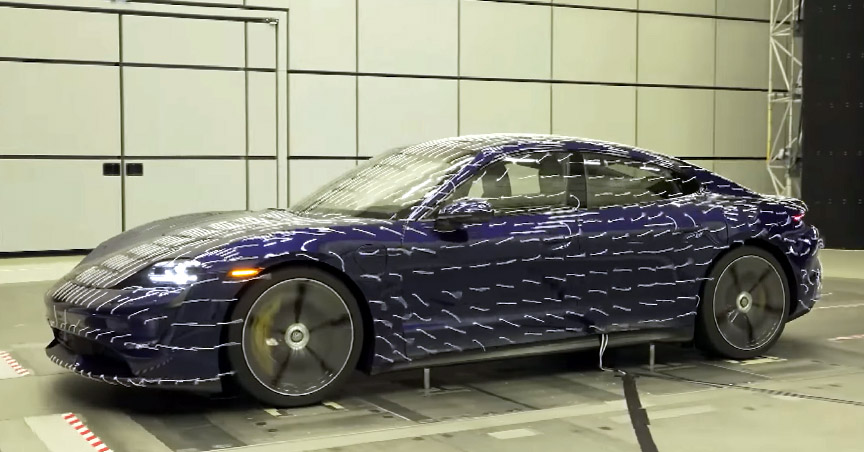
Furnishing of the Porsche Taycan production line – the flexi-line – started in Stuttgart-Zuffenhausen already in the beginning of 2018. Instead of the conveyors, the AGVs (automated guided vehicles) transport the car bodies. This helps to change the cycle lengths or pause an AGV for a sensitive job. In addition to the vehicle assembly, the electric motors are also produced onsite. Start of the production of the first customer vehicles: September 9, 2019.
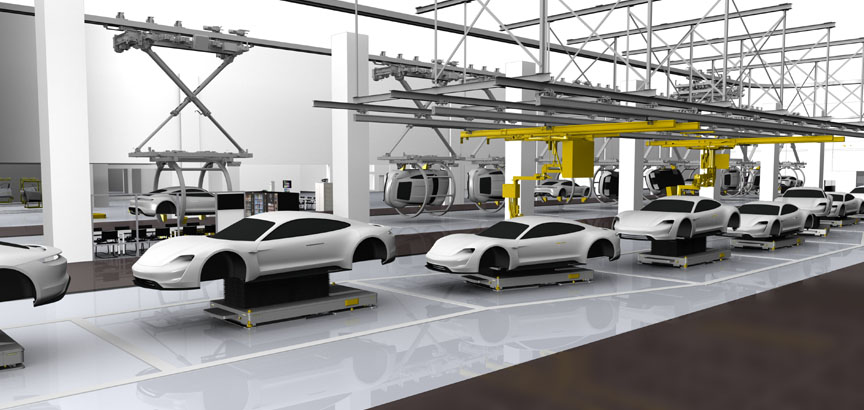
Although “spy photos” of the Taycan test cars were around since October 2017, Porsche decided to show the camouflaged car with photos and a video on May 19, 2018.
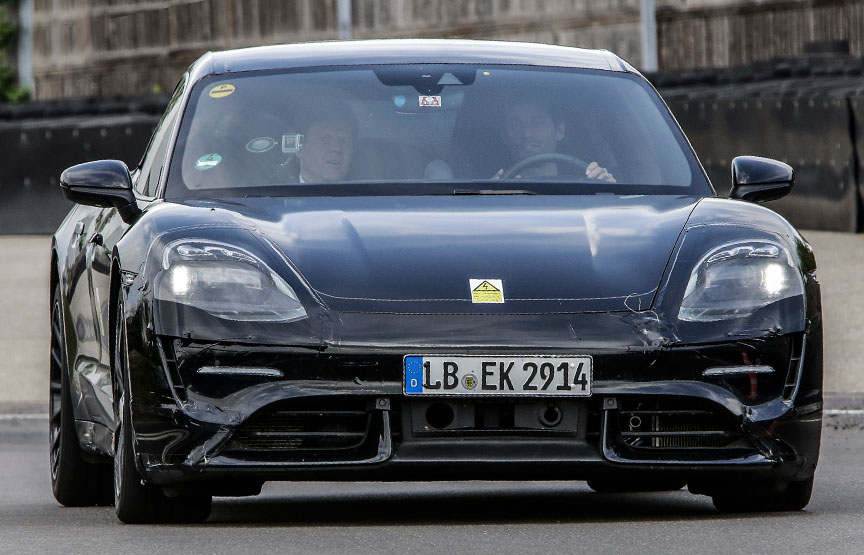
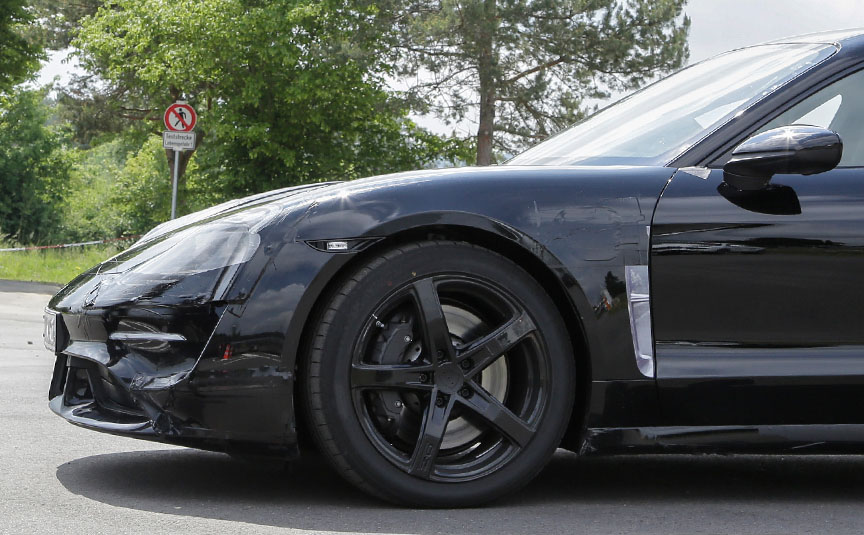
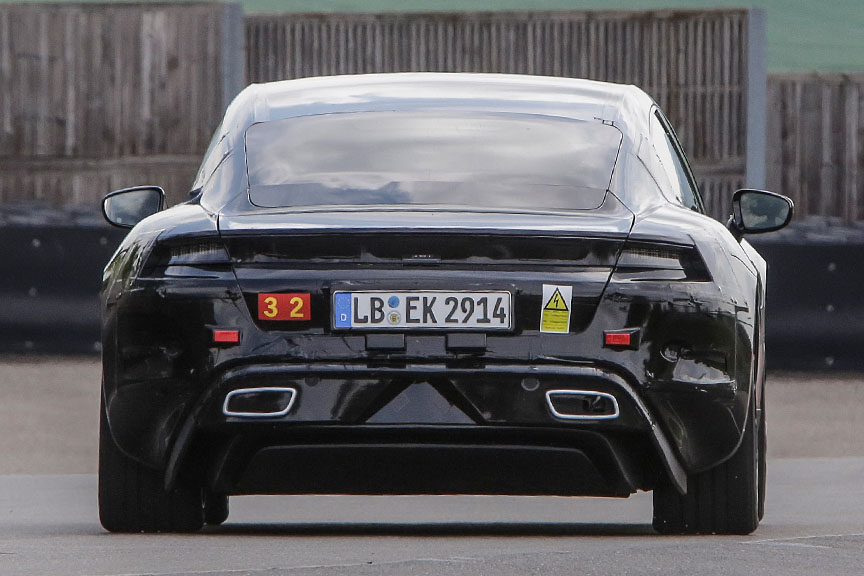
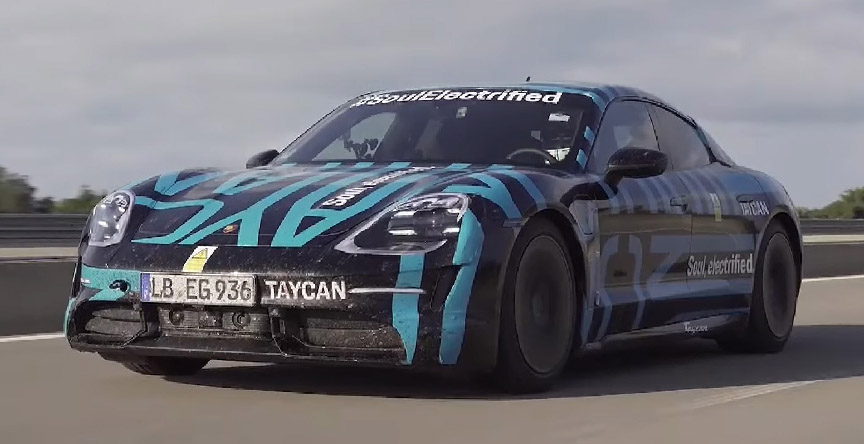
7:42 Nürburging Nordschleife lap time
On August 26, 2019, Porsche unveiled that the Taycan had lapped the Nürburgring Nordschleife in 7 minutes and 42.34 seconds. This translates to average speed of 100 mph/160 km/h. The top speed was 161 mph/259 km/h. The car was piloted by Lars Kern, who has set the Nürburgring records for Porsche 991 GT3 and GT2 RS cars. This result placed the Taycan family sedan between the 997 GT3 3.8 and the Cayman 981 GT4 track day cars.
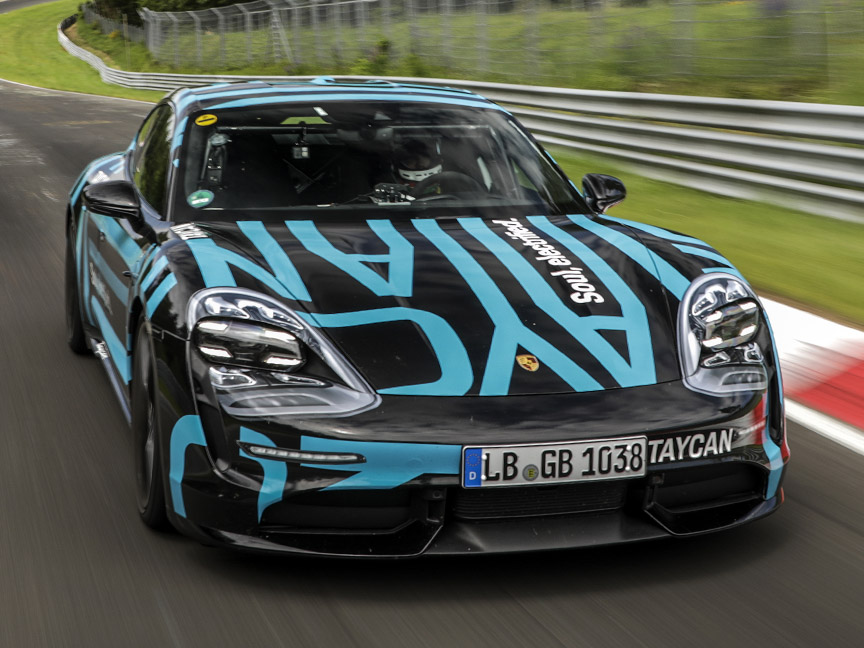
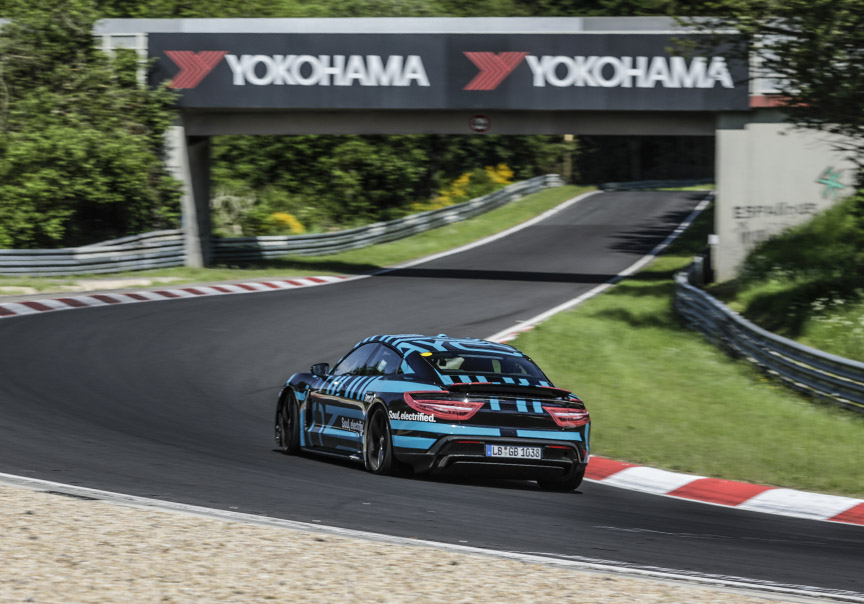
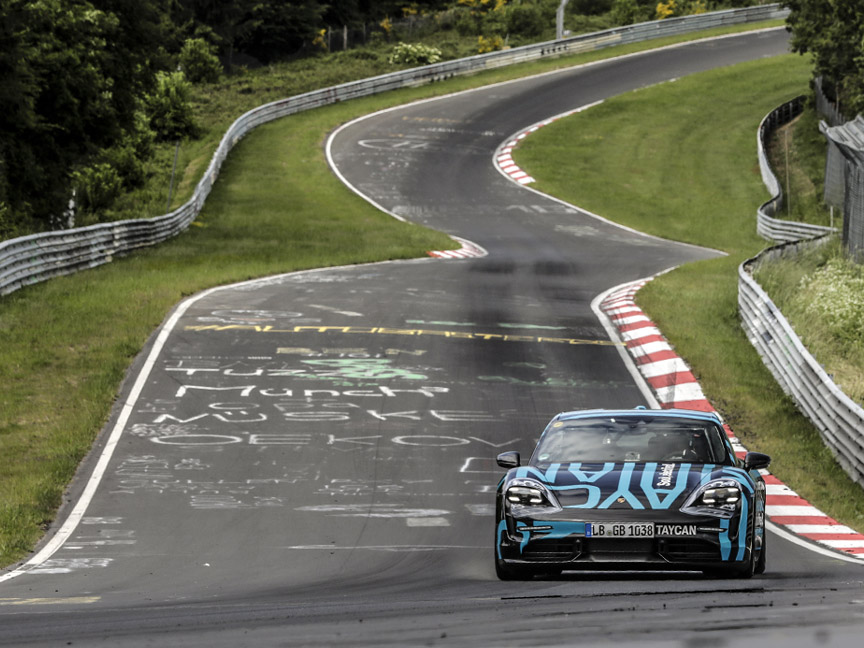
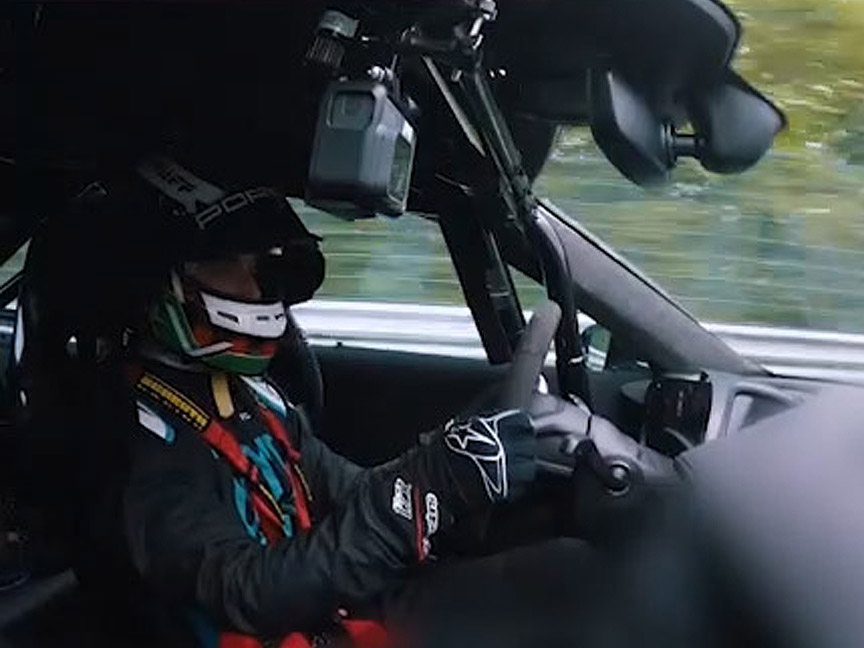
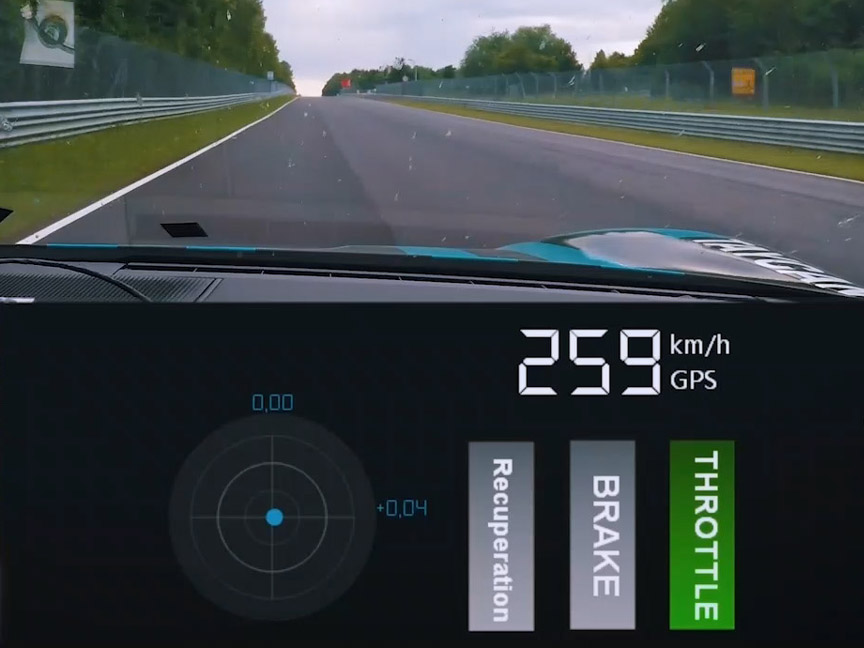
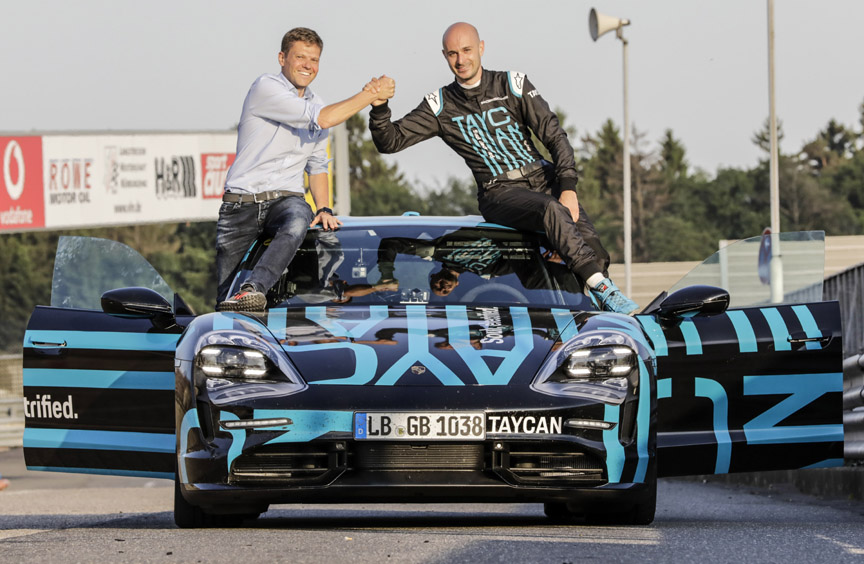
Crazy record
In 2019, a crazy demonstration was performed on the deck of the navy aircraft carrier USS Hornet – the Taycan Turbo S accelerated to 90 mph/145 km/h and braked to zero. On board of a ship!
The production car
The world premiere of the Taycan was held on September 4, 2019, on three continents at the same time. The unveiling took place for inivited quests in Berlin (Germany), Fuzhou (China) and Toronto (Canada).
Initially only the fastest versions were unveiled. The 0-60 mph sprint in just 2.6 seconds makes the Taycan Turbo S even quicker than the 911 991 GT2 RS which does it in 2.7 seconds (the official time for the 0-100 km/h sprint is 2.8 seconds for both).
Looking at the body shape of the Panamera and the Taycan, it makes you wonder why Porsche has created two cars that look the same, but don’t share any parts – something that would make the products more affordable or more profitable. Speaking of dimensions, the Taycan is shorter (-3.4″/86 mm), but lower (-1.8″/46 mm) and wider (+1.1″/29 mm), making it look sportier than the Panamera. Comparing the Turbo versions, the Taycan is 310 kg/683 lb heavier than the Panamera.
The 2-speed transmission installed on the rear axle is an innovation developed by Porsche. First gear gives the Taycan even more acceleration from a standing start, while second gear with a long gear ratio ensures high efficiency and high power reserves.
Speaking of motors, then the one on the rear axle of the 4S has an active length of 130 mm, while Turbo and Turbo S have a rear motor with 210 mm active length.
Battery packs
The Taycan and Taycan 4S come with the single-deck 79.2 kWh Performance battery pack as standard and are optionally available with two-deck 93.4 kWh Performance Plus battery. The latter is standard in Taycan Turbo and Turbo S. Maximum peak charging capacity with the 79 kWh battery is 225 kW and with the 93 kWh battery 270 kW. Comparing cars with 79 kWh and 93 kWh batteries, then the latter is 80 kg / 176 lb heavier. The rear motor in the top versions is also much heavier and together with added equipment, the Taycan Turbo is 85 kg/187 lb heavier than the 4S+ and 165 kg/364 lb heavier than the 4S.
If the Taycan will be your city car, go for the smaller and lighter battery. It could be seen already with the Teslas, that if you have it as a city car, the smallest battery pack is enough. Saving money is just one side, the better side is a lighter car that handles better. In the case you enjoy driving through the curves, that is.
The new Plug & Charge automatic payment system simplifies charging: just plug in the charging cable and charging is underway. The charging station automatically identifies the connected vehicle thanks to the authentication data saved in the vehicle.
Price
The price of the Porsche Taycan is very nice, it is up to 10% cheaper than the Panamera and up to 17% more affordable than the 911 (the prices of the 4S versions were used for this calculation). The Taycan is the most affordable 4-seater non-SUV Porsche after the 1991-1995 968.
Optional equipment
The optional ACC Adaptive Cruise Control includes:
* Turn Assist – monitors the traffic in the oncoming lane when turning left and can prevent a collision by warning and braking
* Auto Stop – If the vehicle detects that the driver has stopped responding, it uses visual and audible warnings, a brief tightening of the seat belt and if necessary a jolt of the brakes to attempt to prompt the driver to resume control of the vehicle. Should this be unsuccessful, after a moderate delay the vehicle will come to a halt in the lane, activate the hazard warning lights and trigger a call to the emergency services
* Additional functions if risk of collision detected: visual and audible warning, warning by active jolt of the brakes, braking force support when the driver’s emergency braking is detected, emergency brake assist, visual and audible warning and braking with detected pedestrians in the collision area.
The optional AACC Advanced Adaptive Cruise Control includes:
* Adaptive Cruise Control
* Porsche InnoDrive – offers optimum regulation of driving speed based on navigation data, radar and video sensors
* Active Lane Keeping – keeps the vehicle in the middle of the lane by continuous steering adjustments
* Emergency Steer Assist – helps the driver to steer the vehicle around an obstacle in a critical evasion manoeuvre
* Intersection Assist – warns the driver (visually, audibly and with a jolt of the brakes) if crossing or oncoming road users are overlooked at an intersection
The optional Lane Change Assist includes a function that detects if the rear-end collision situation is approaching and then warns the vehicle approaching from the rear with hazard warning lights.
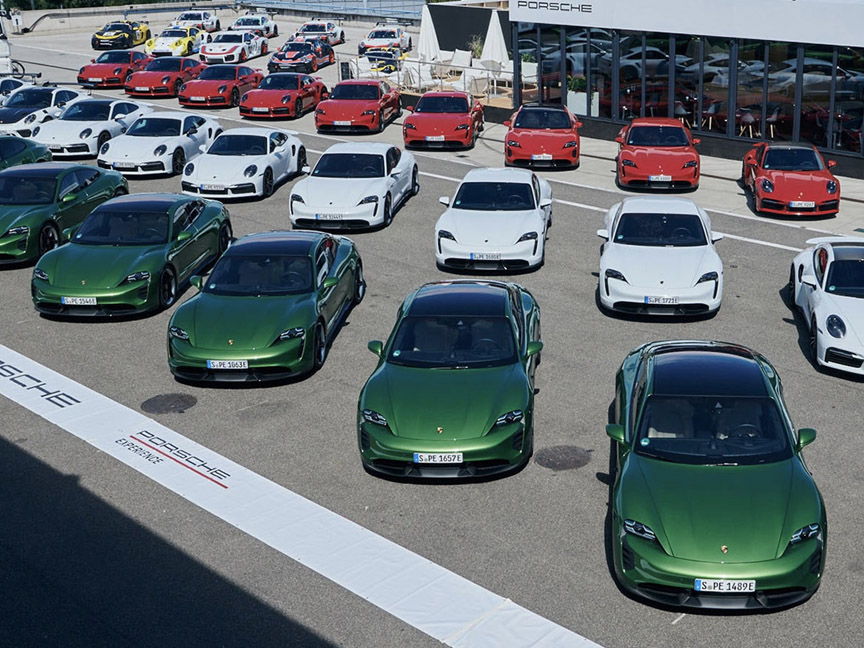
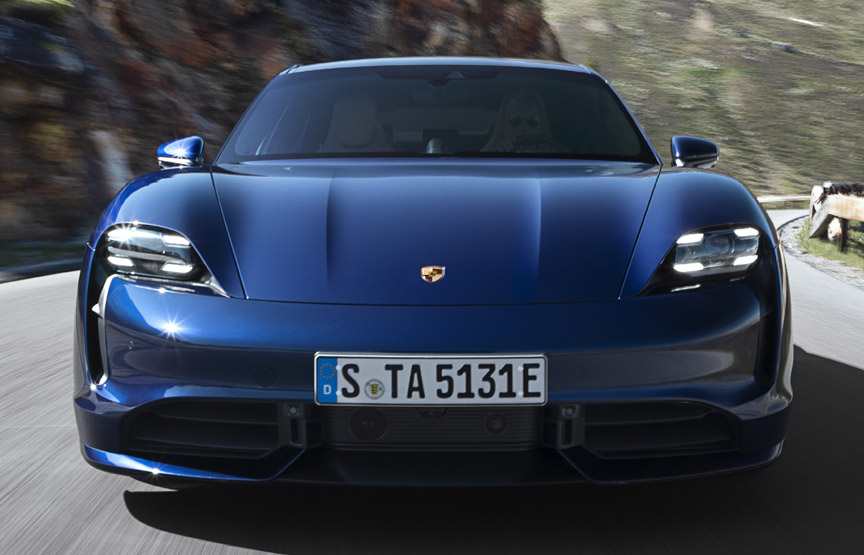
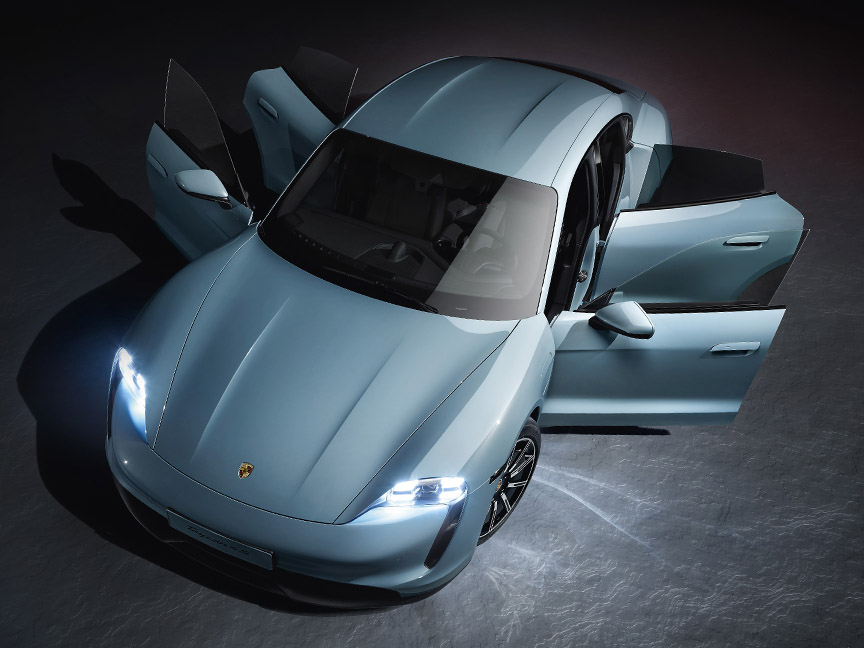
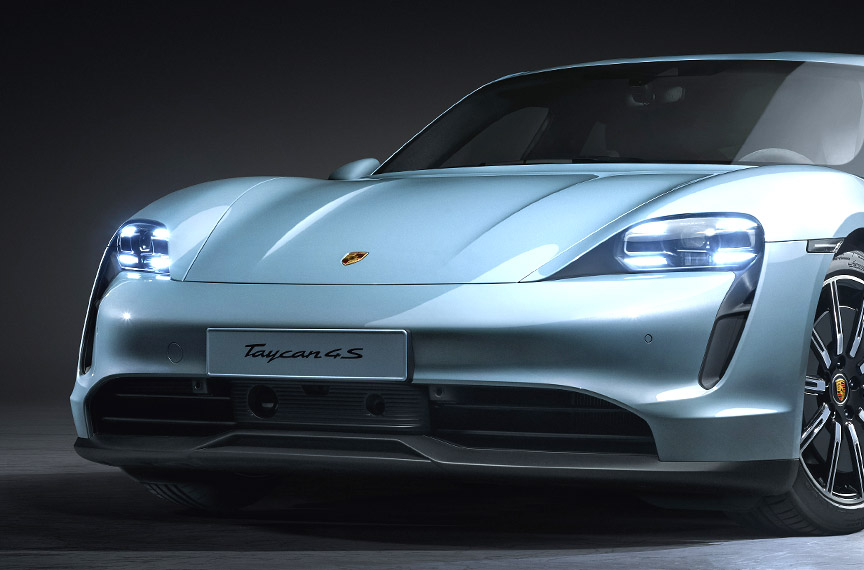
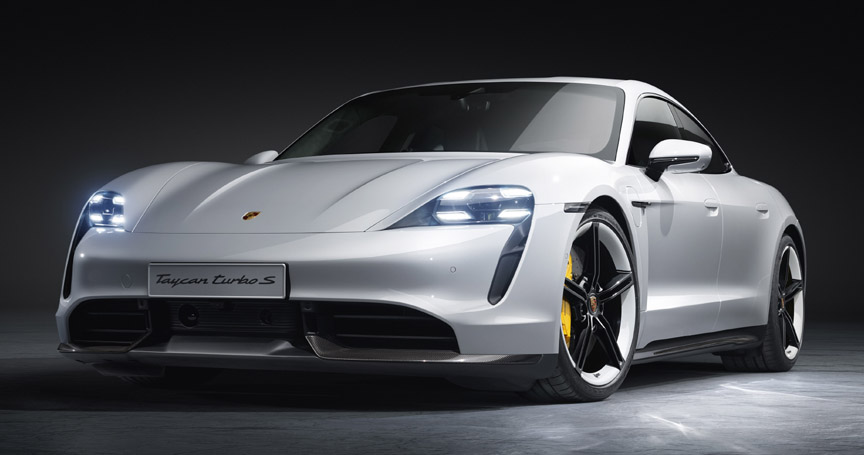
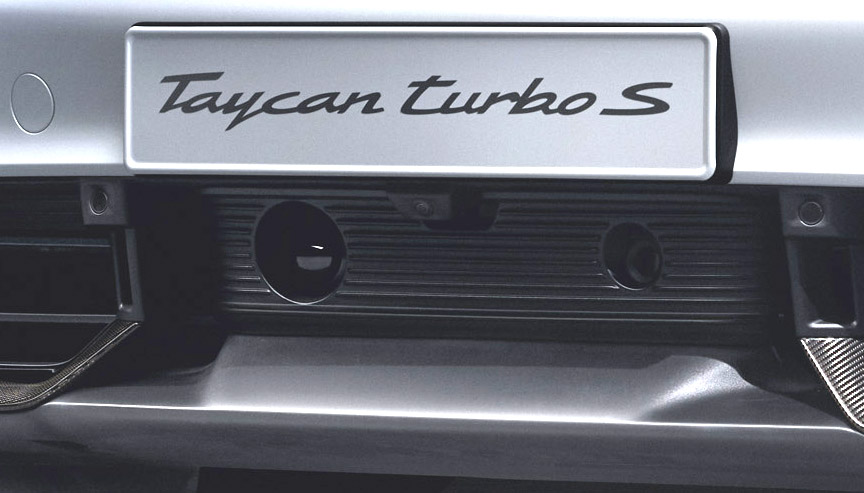
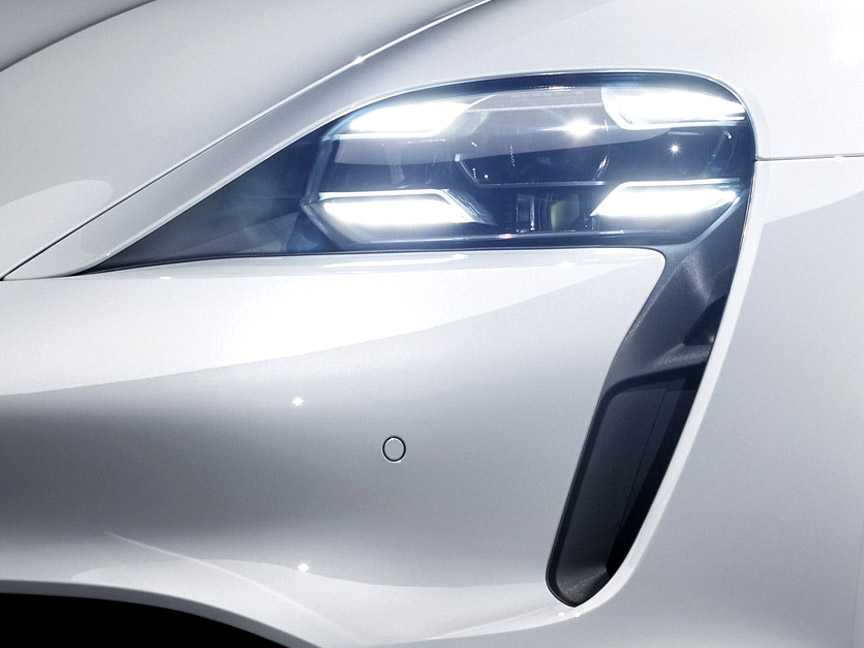
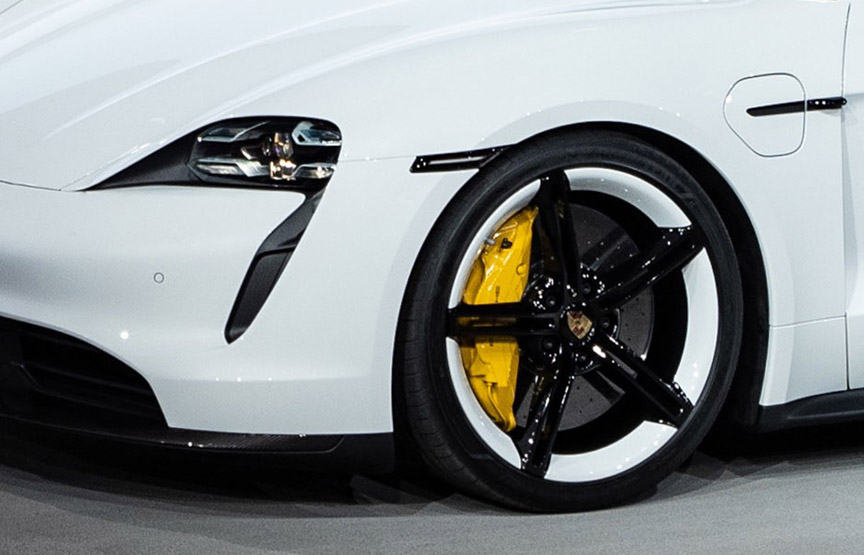
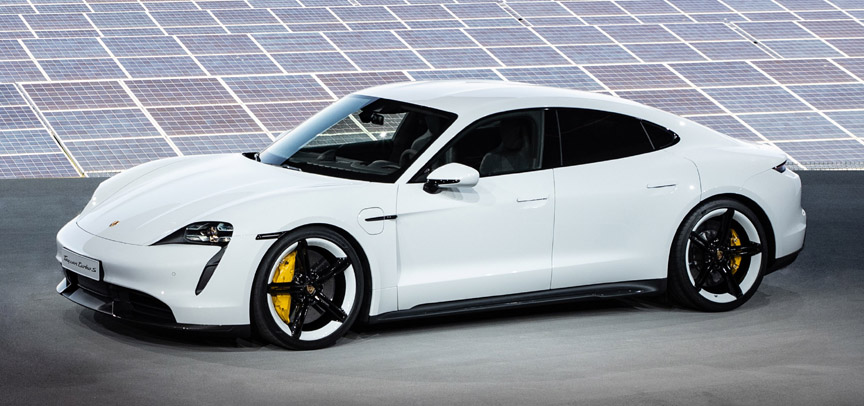
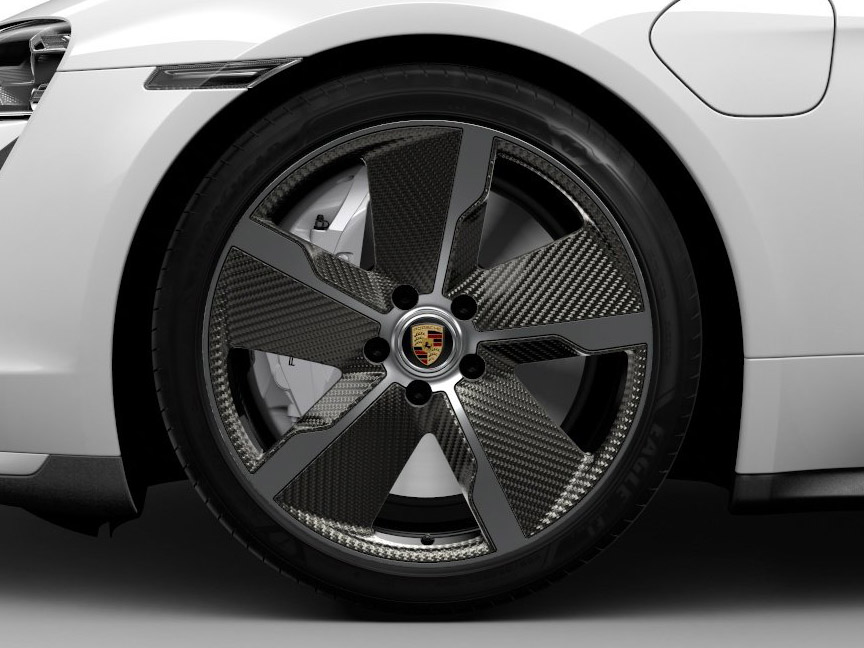
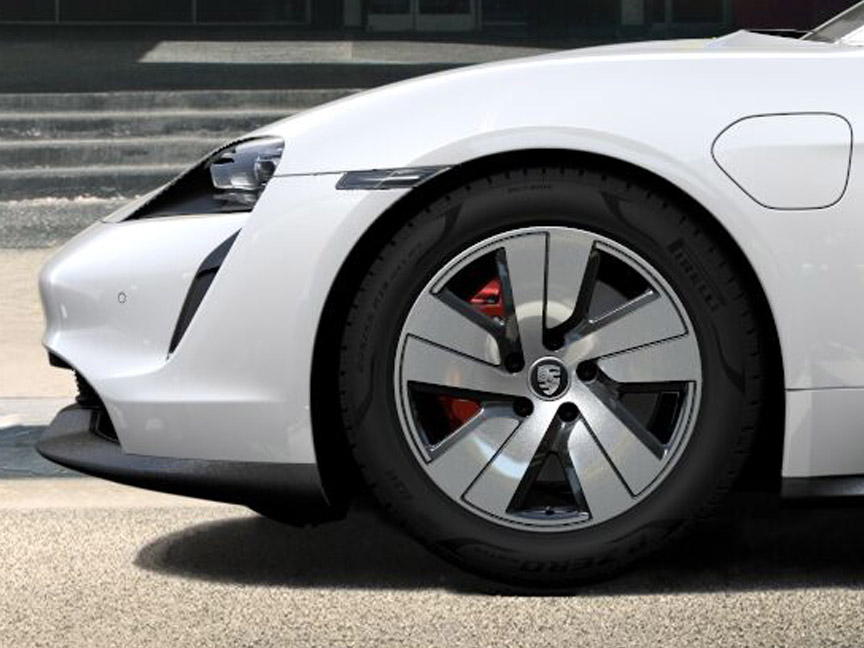
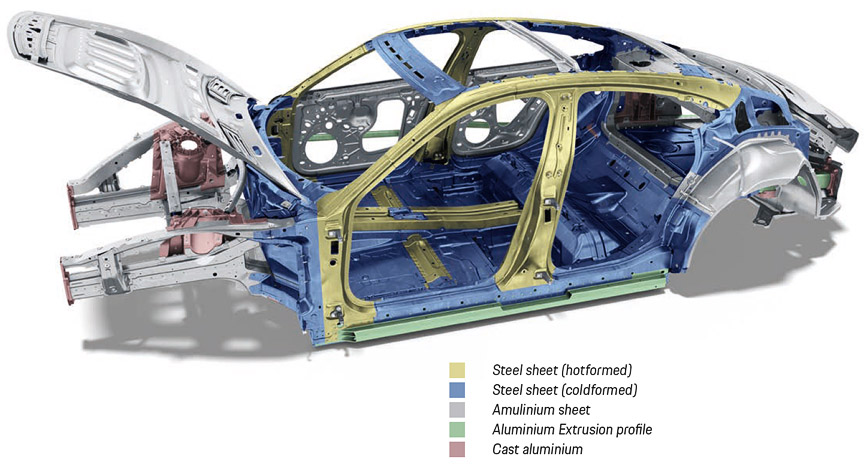
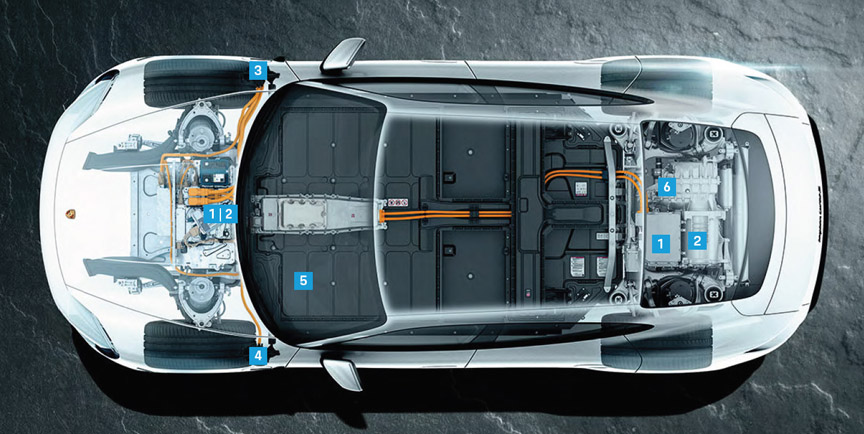
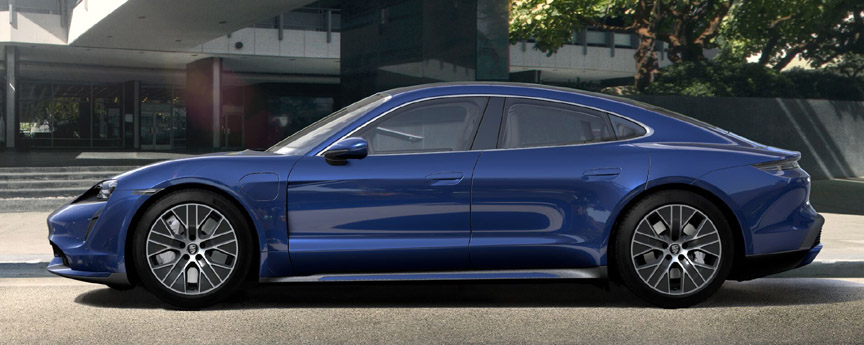
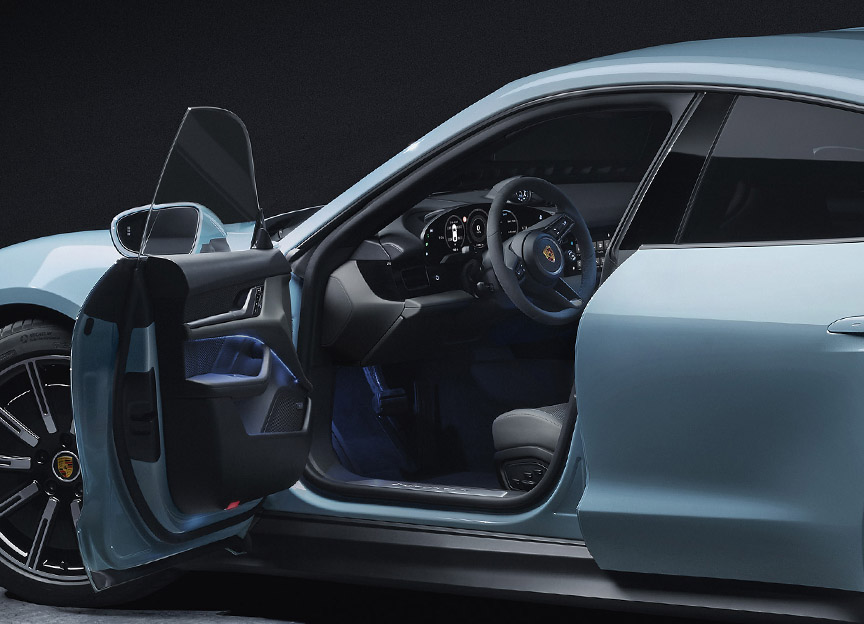
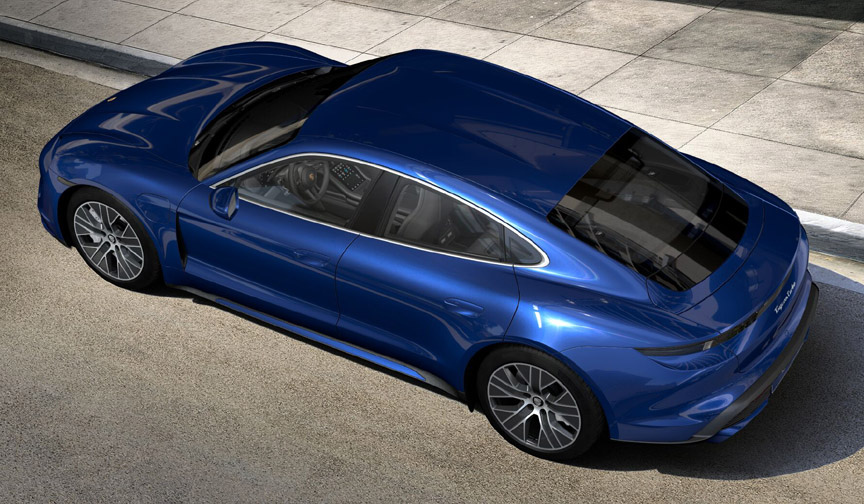
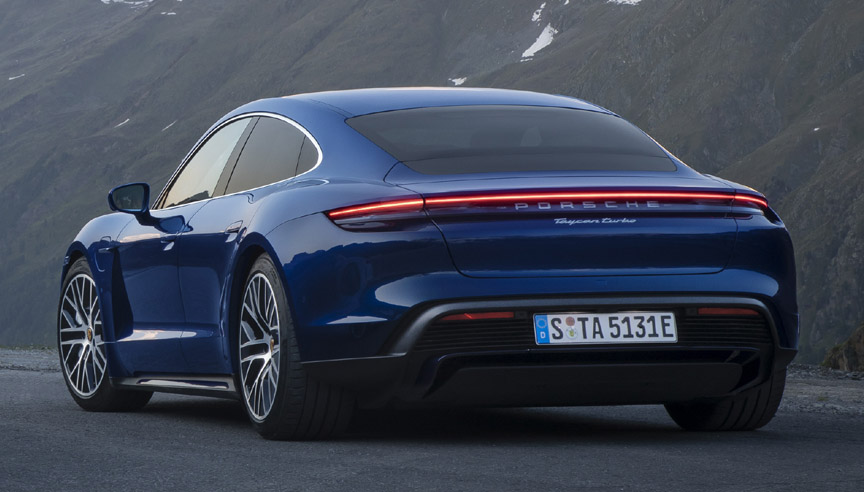
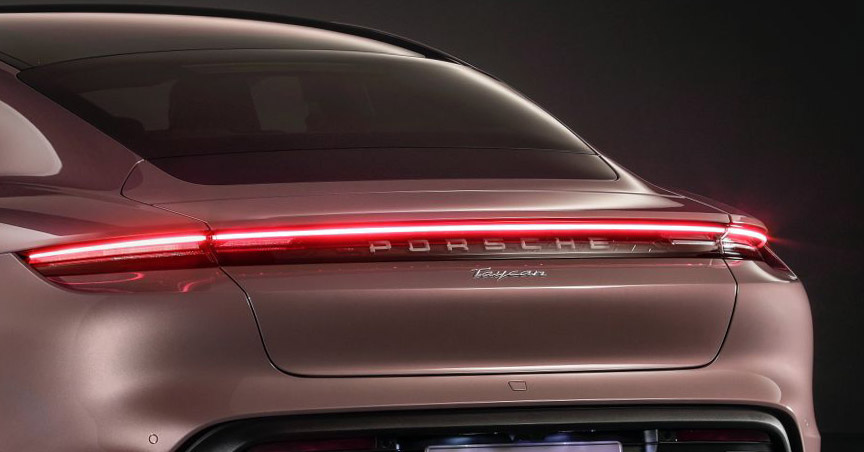
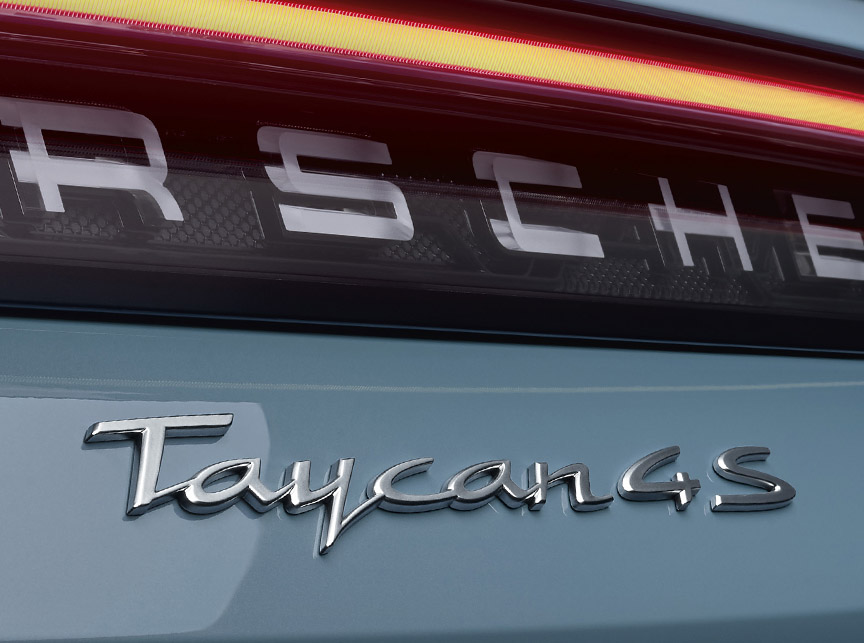
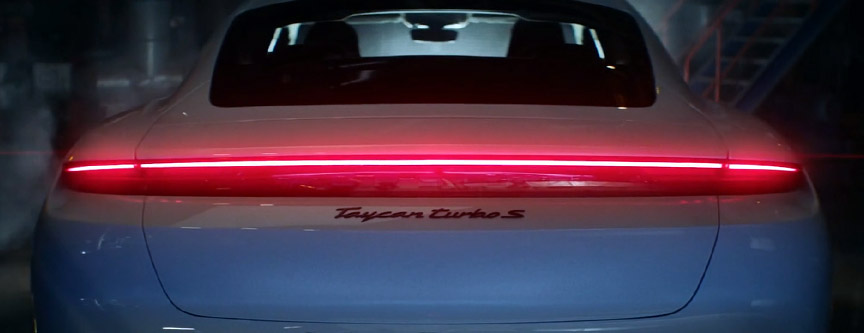

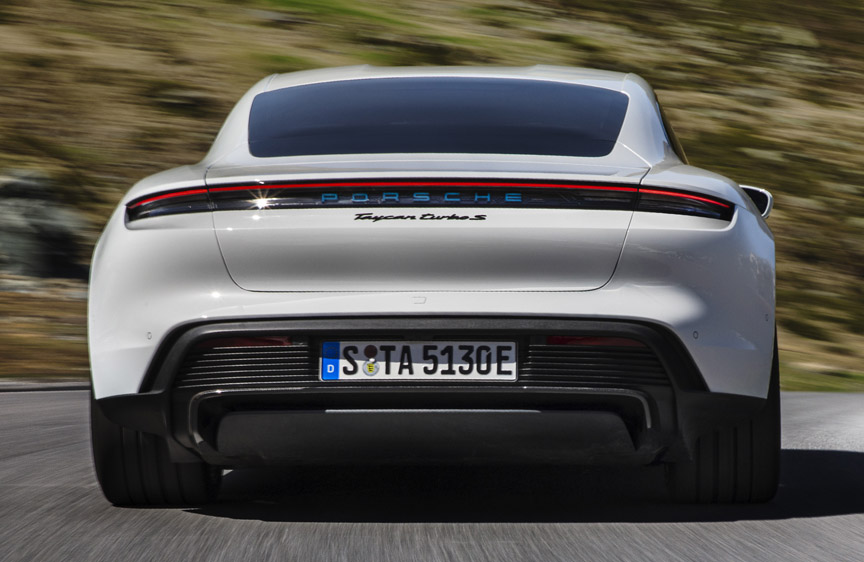
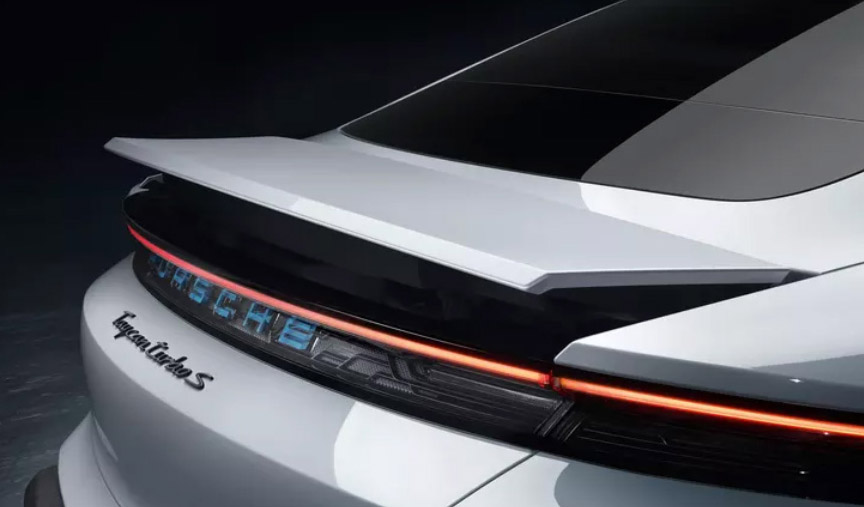
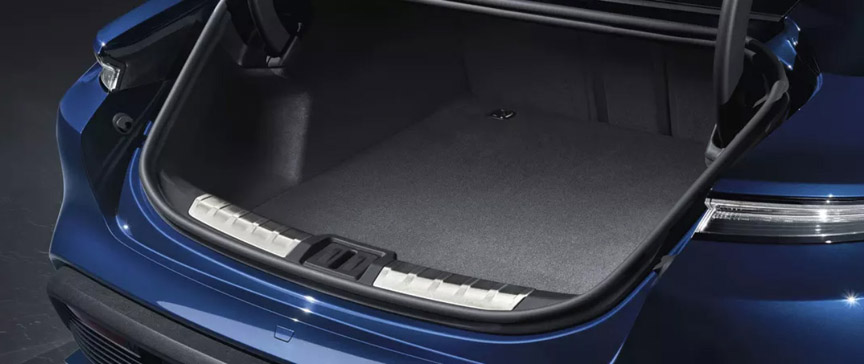
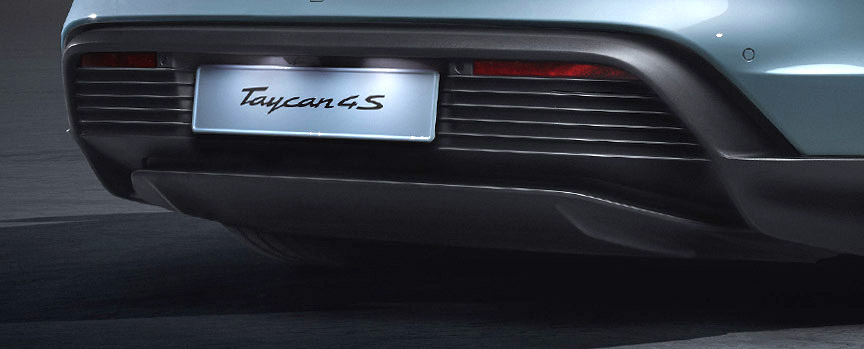
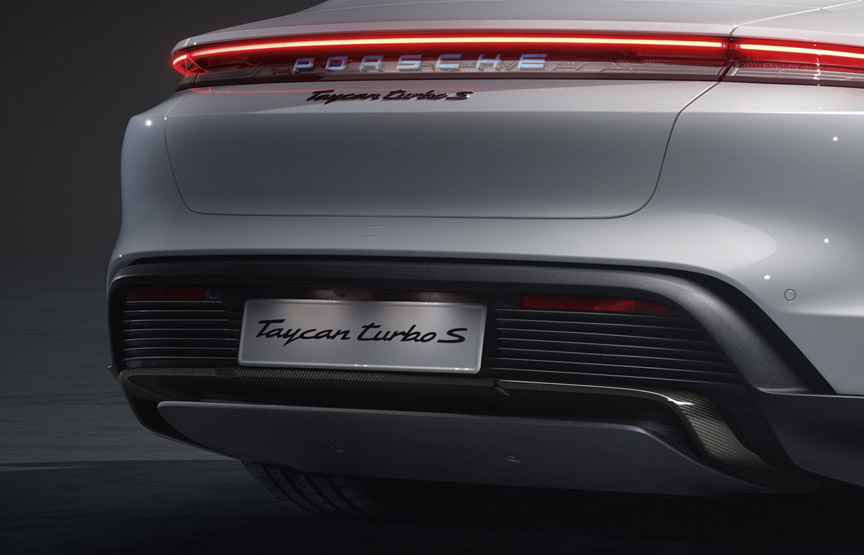
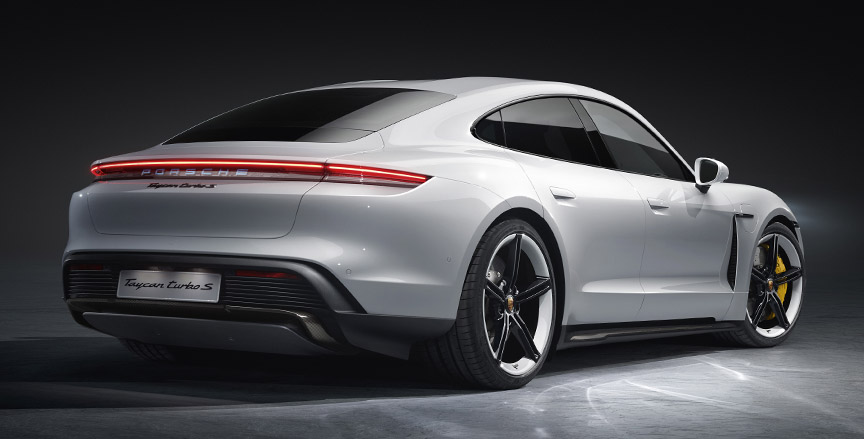
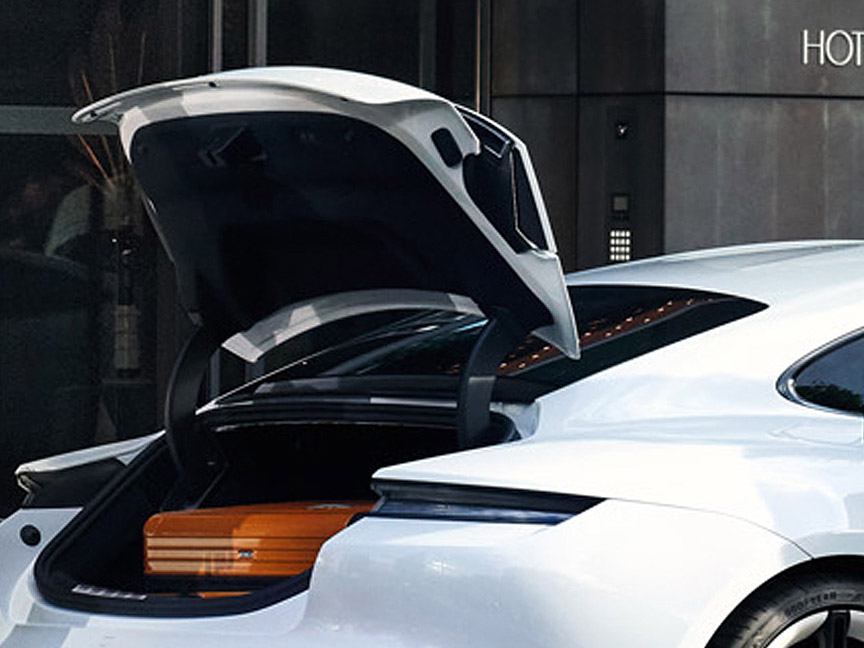
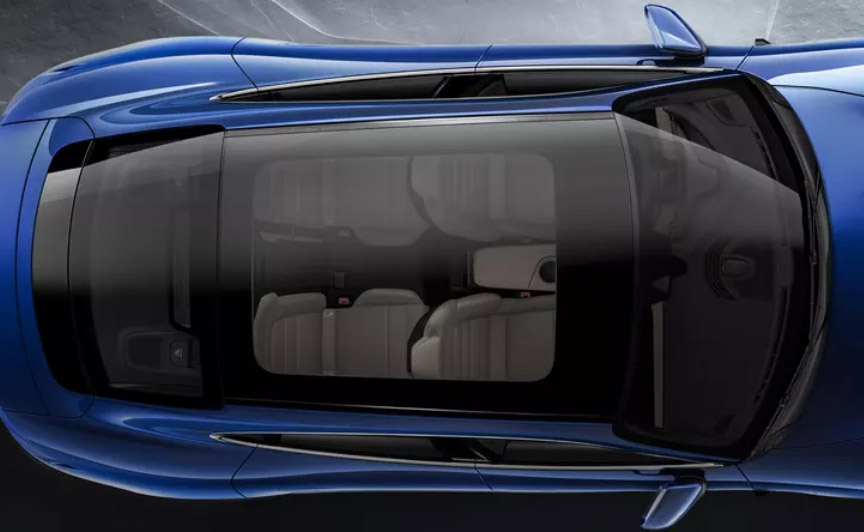
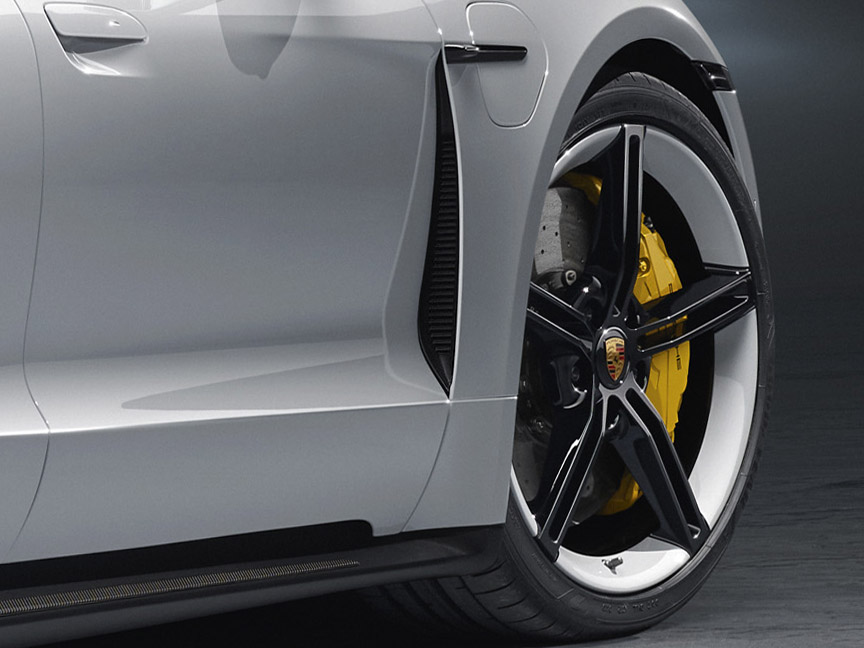
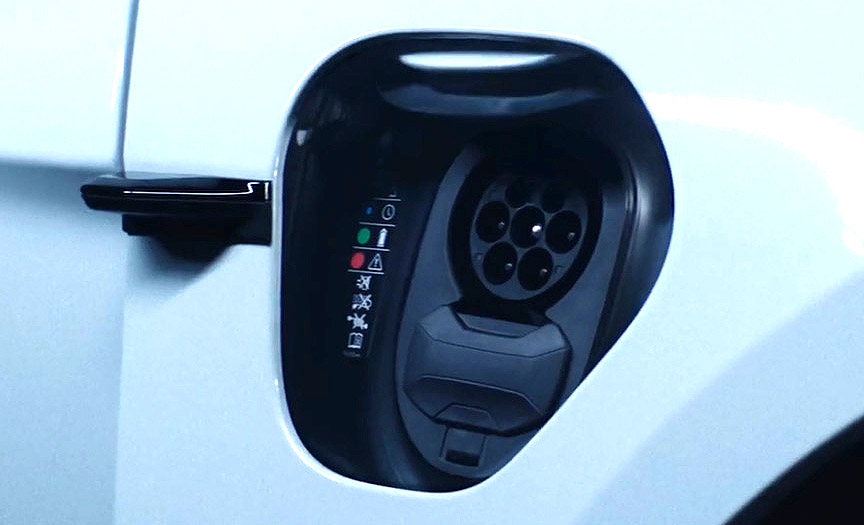
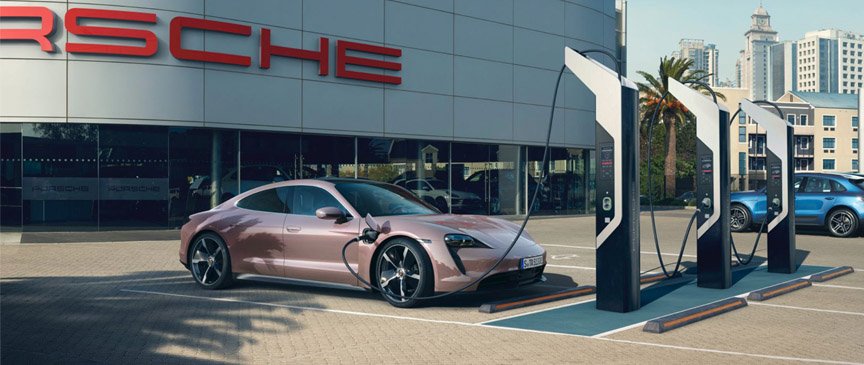
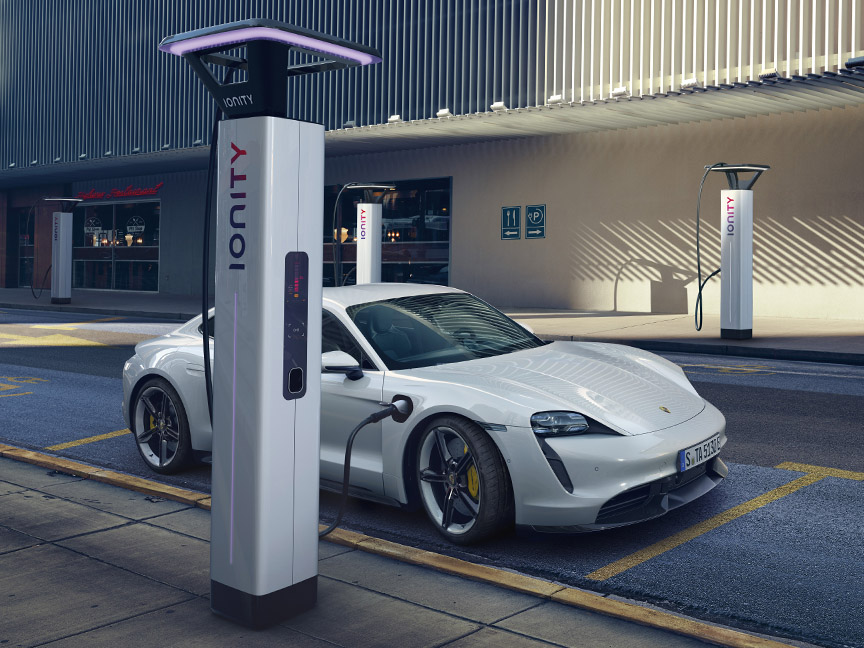
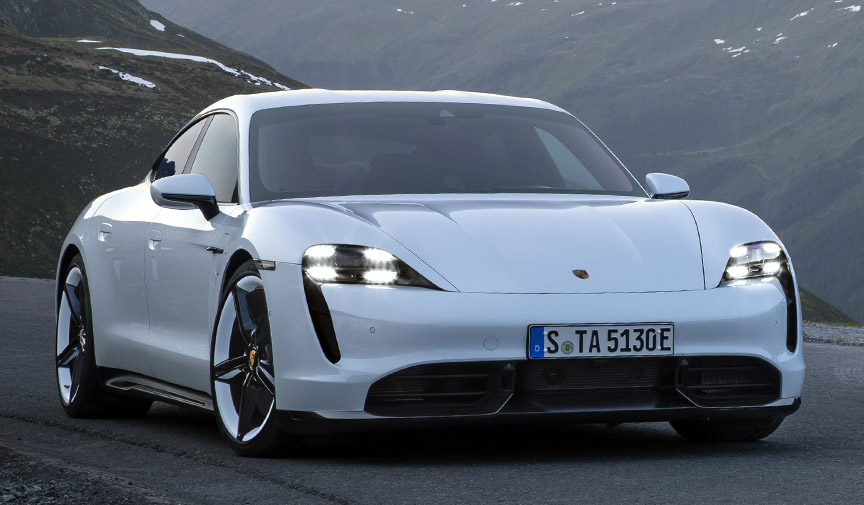
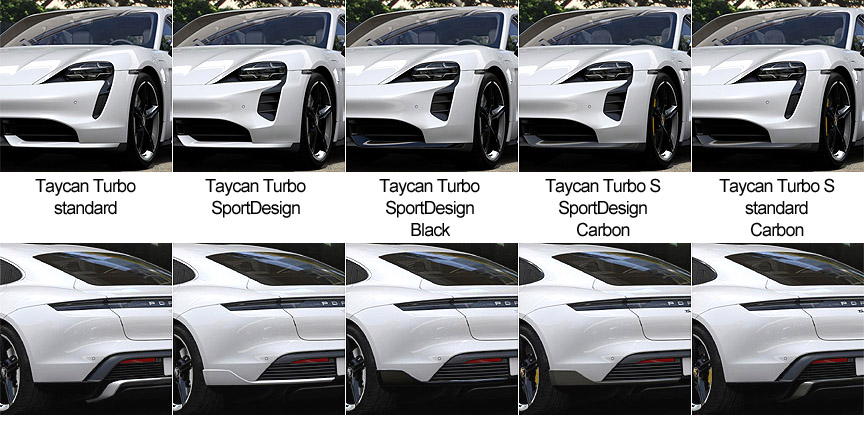
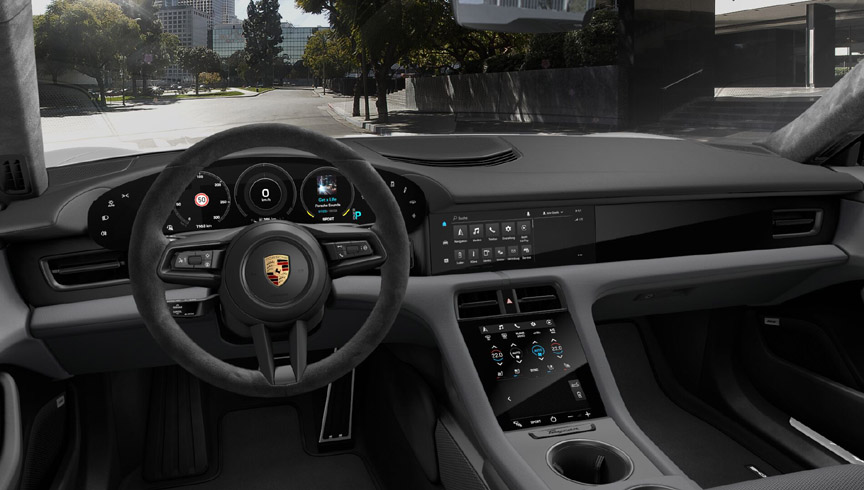
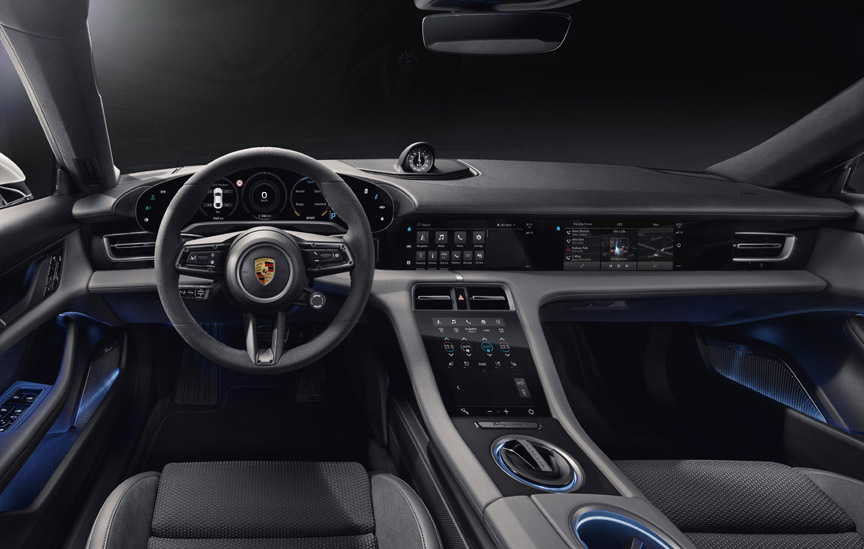
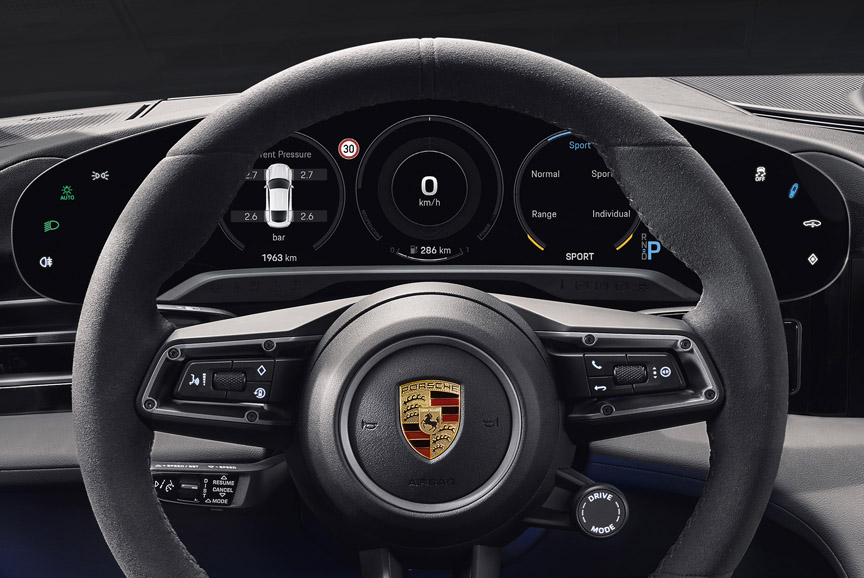
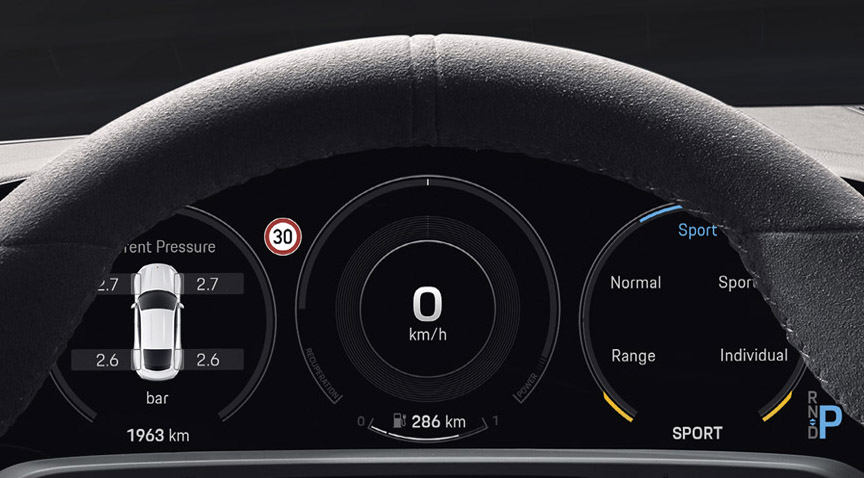
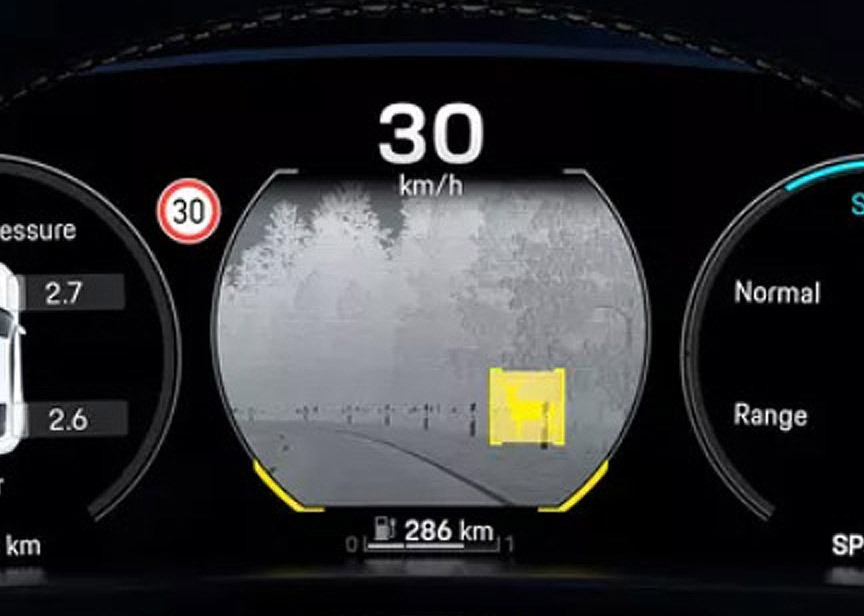
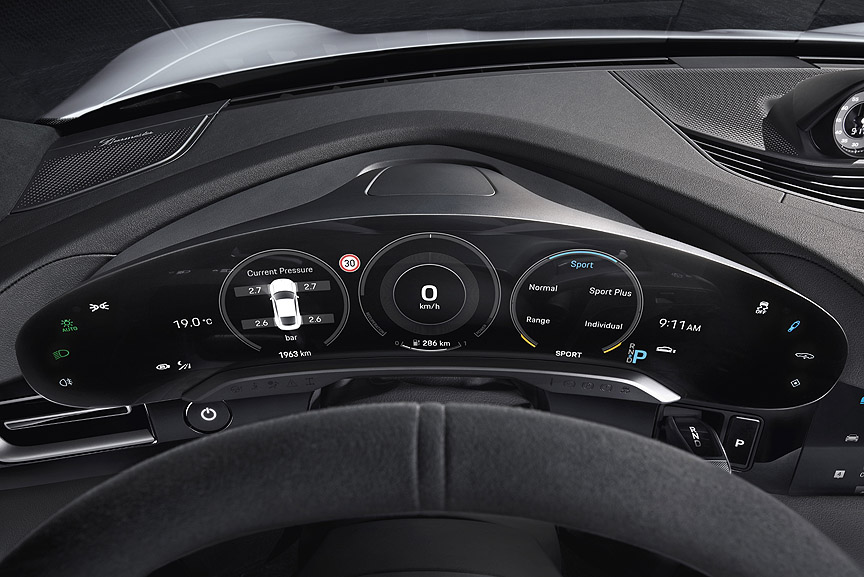
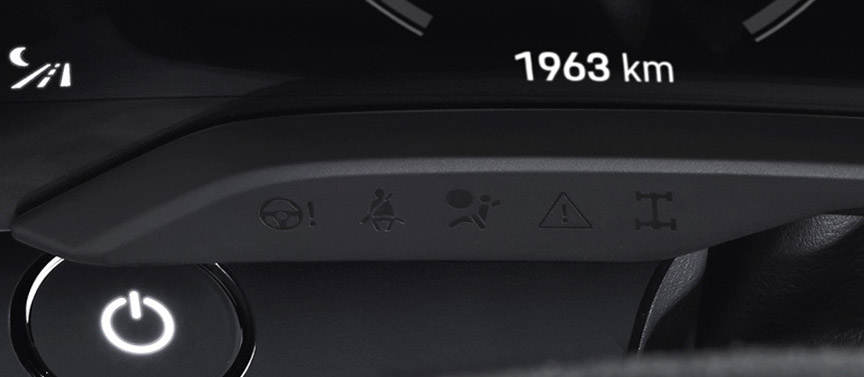
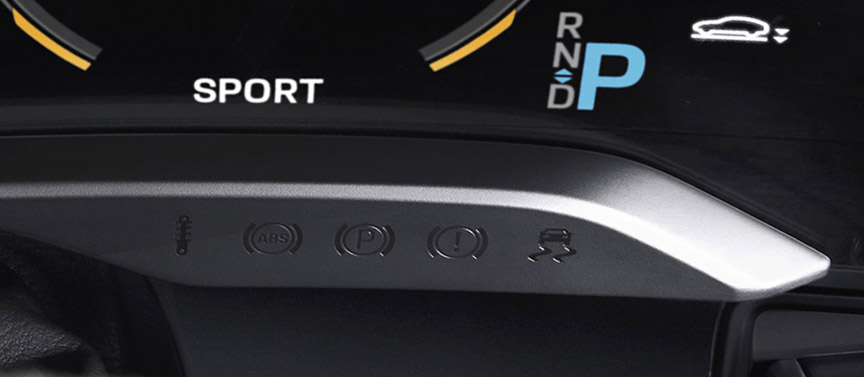
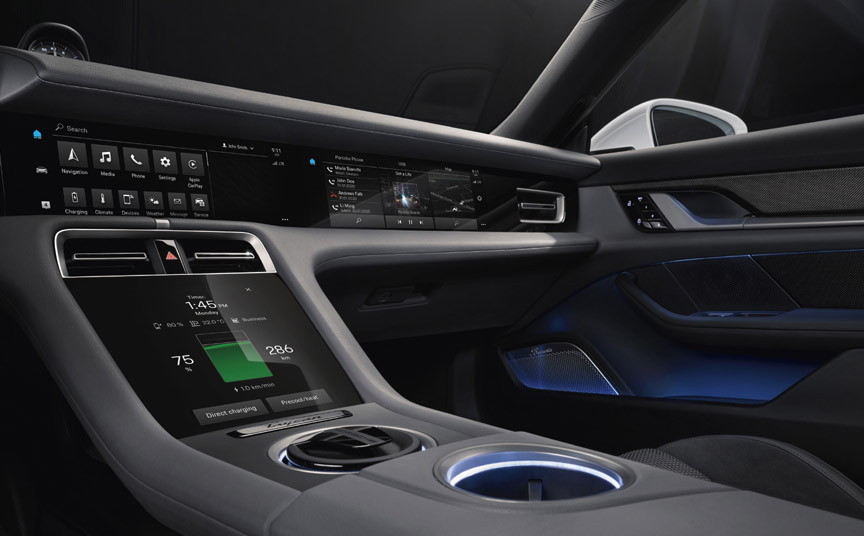
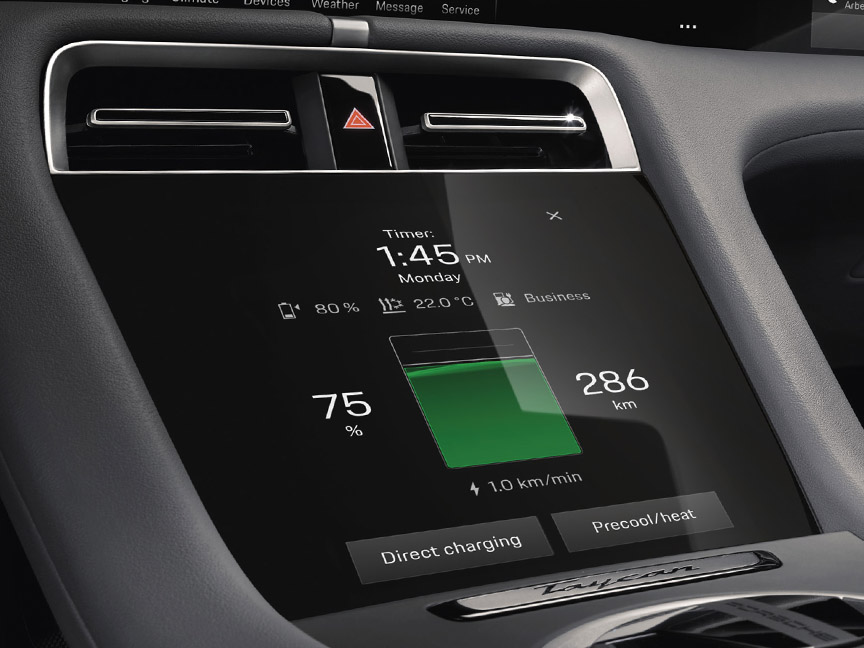
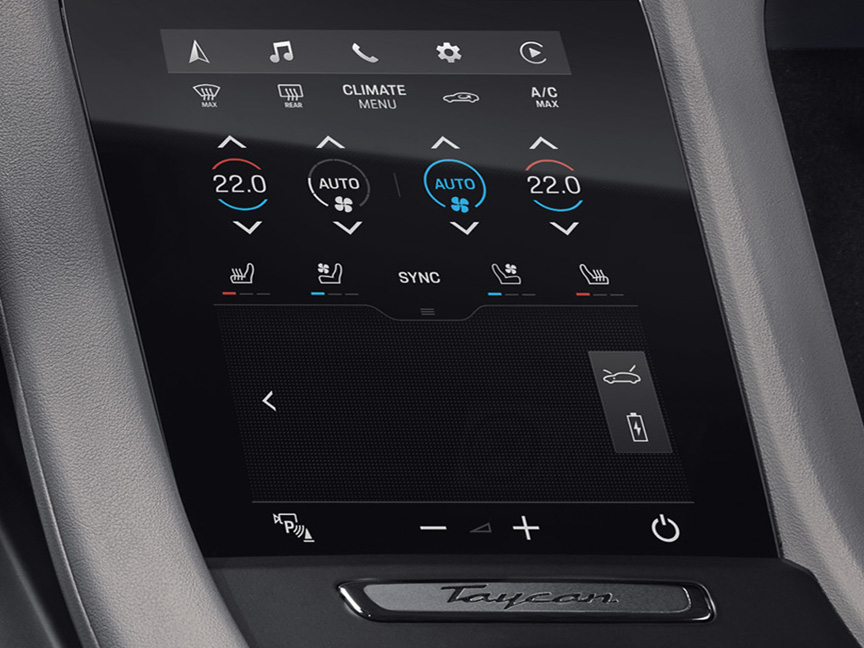

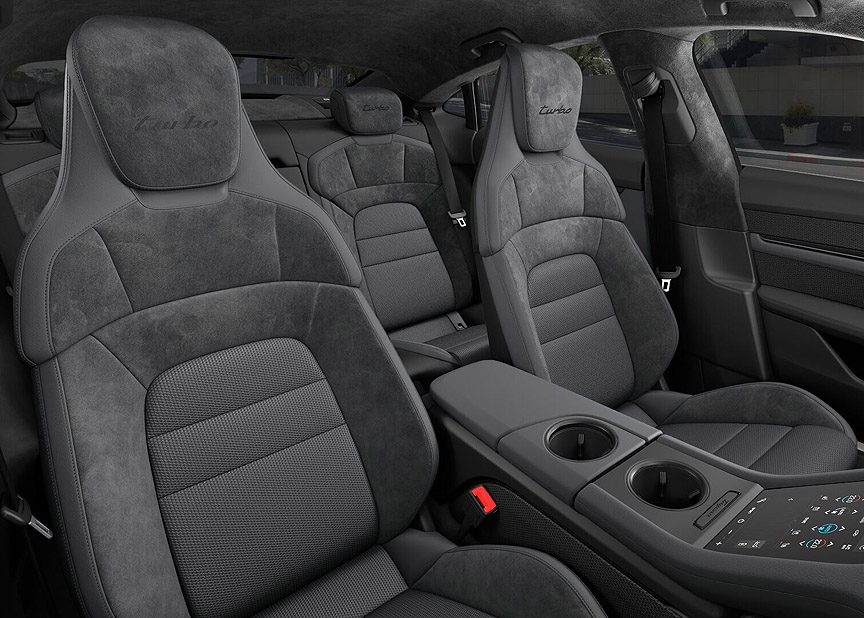
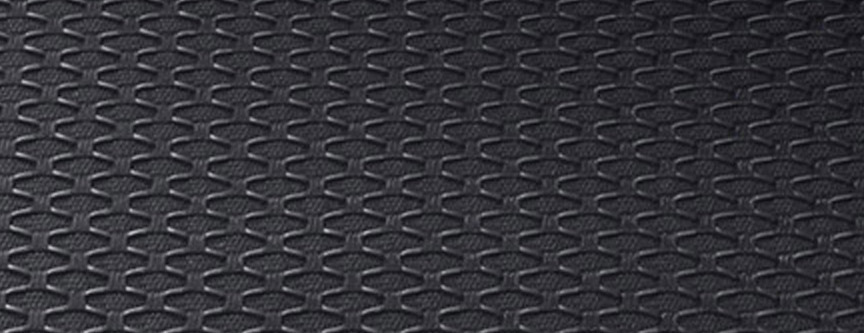
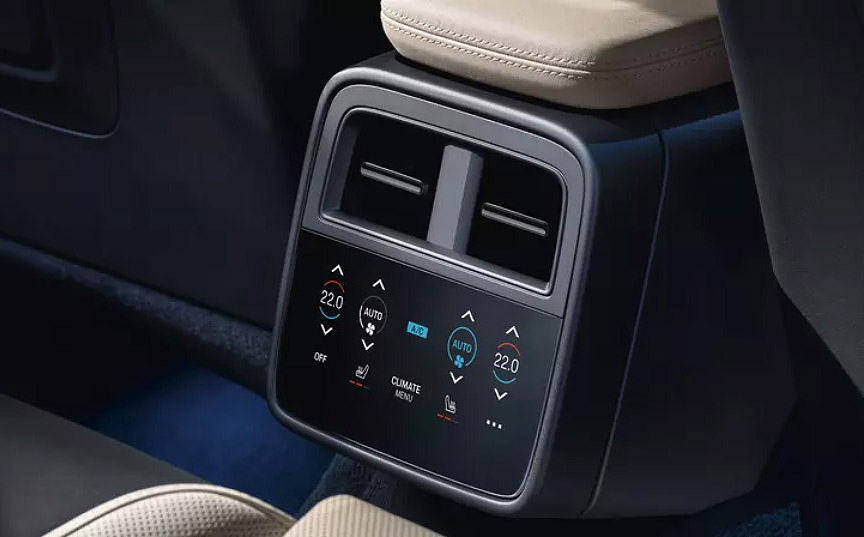
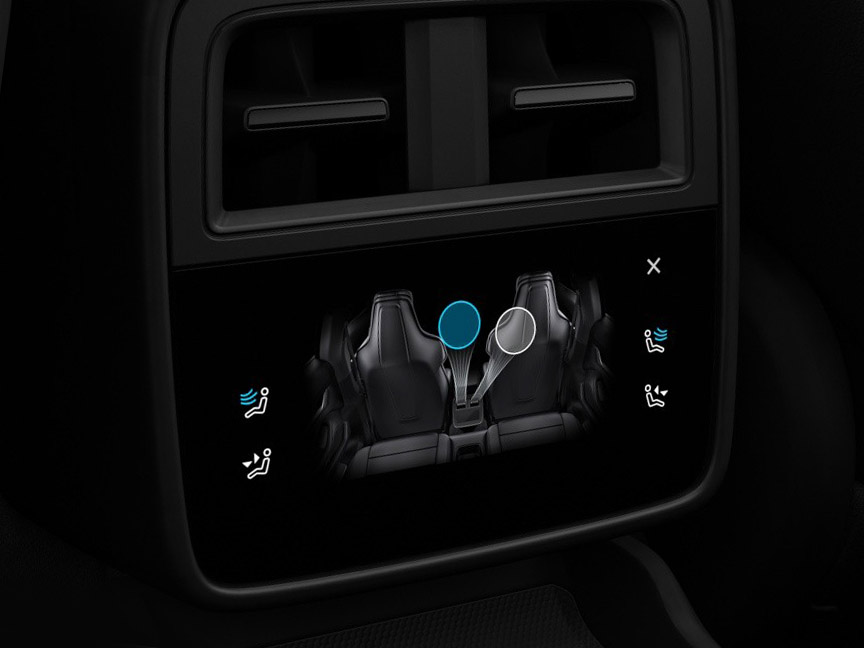
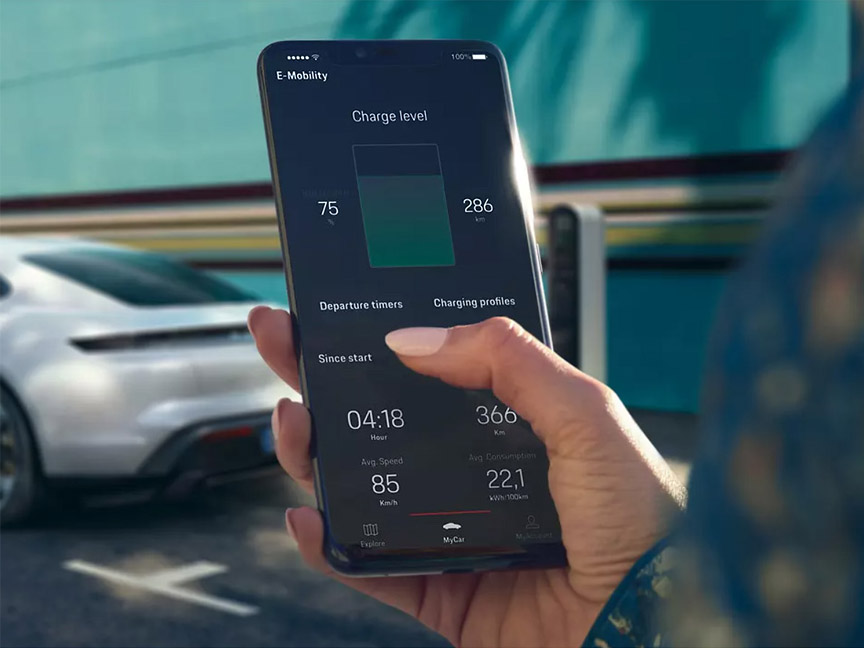
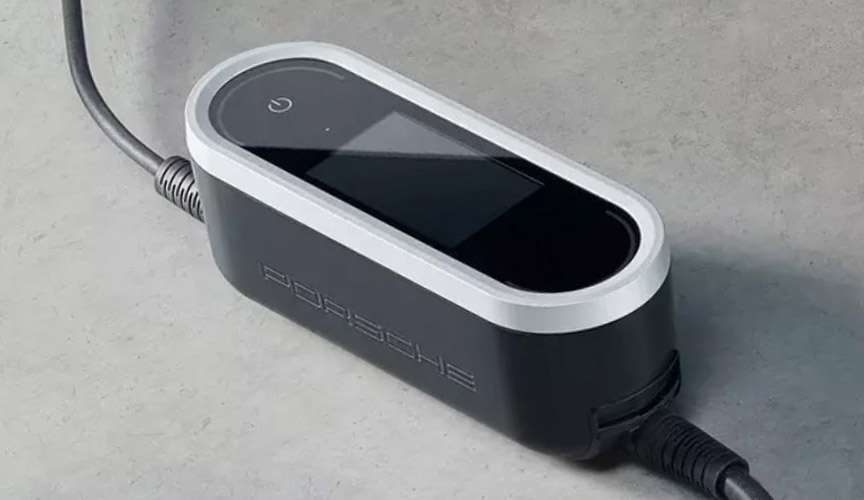
Porsche Carrera Cup Germany safety car
Because of the coronavirus, the 2020 Porsche Carrera Cup Deutschland starts in September. The first race is at Le Mans, just before the 24h race. The Carrera Cup Germany and Carrera Cup France 991 GT3 Cup 4.0 cars start together. The new safety car for the Carrera Cup is a Taycan Turbo.
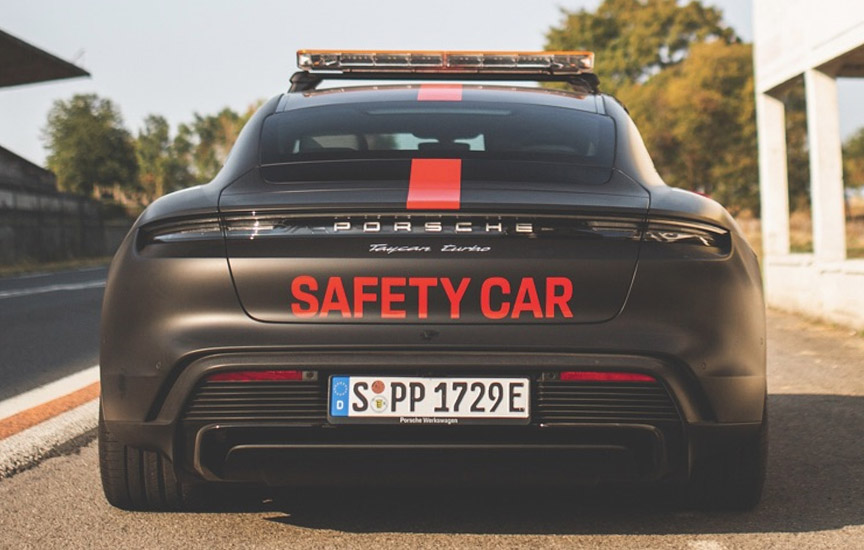
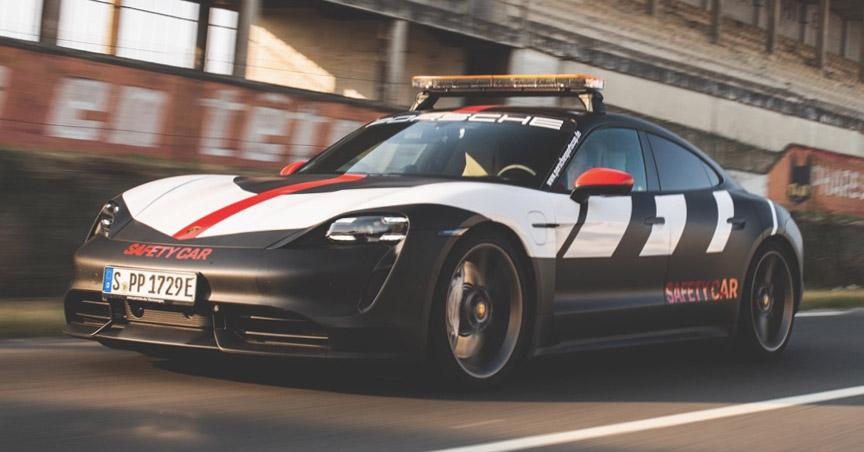
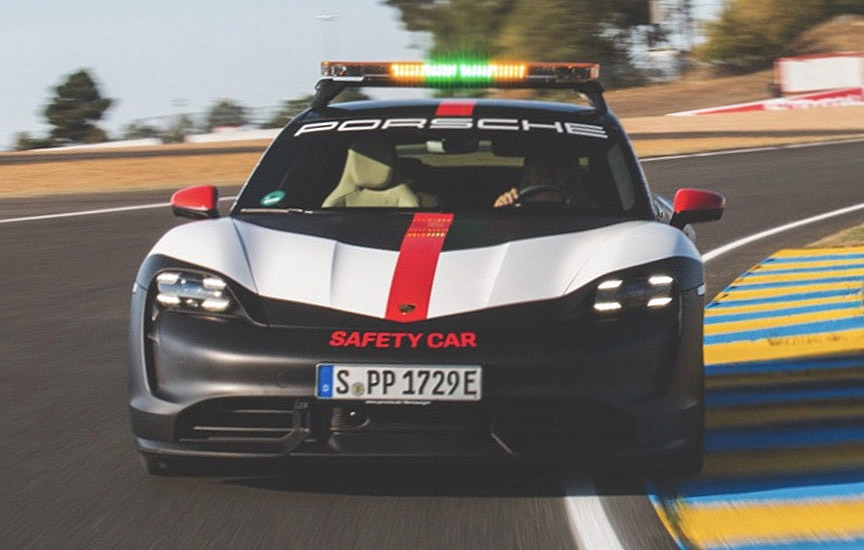
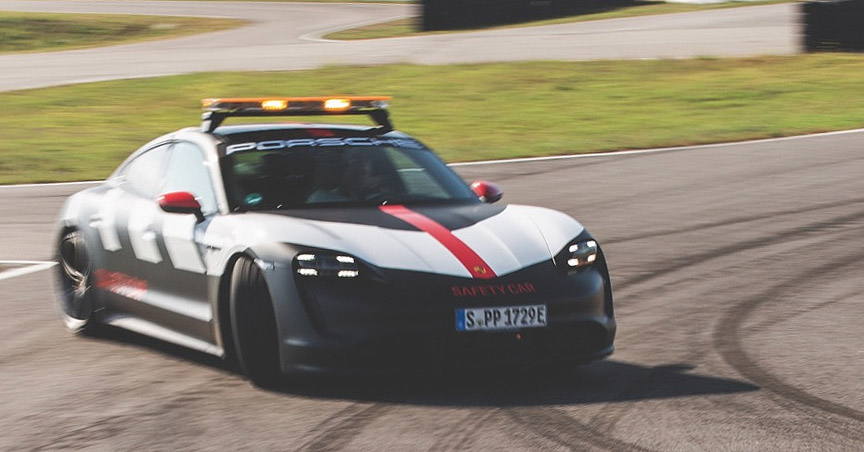
The Cross Turismo version of the Taycan was unveiled 1.5 years before the Taycan sedan, but it goes into production after the sedan.
The Porsche Taycan has been awarded with:
2019 Top Gear Car of the Year
2019 Top Gear Game Changer of the Year
2020 German Car of the Year in front of BMW 3, Mazda 3, Opel Corsa and Peugeot 208 (what?!)
2020 World Luxury Car of the Year in front of Mercedes EQC and Porsche 911 (are these really the best luxury cars in the world?)
2020 World Performance Car of the Year in front of Porsche 911 and Porsche 718 4.0. We can live with the decision that the top 3 best performance cars are Porsches, but sceptics are harder to convince.
At the time when lowering CO2 is more important than ever, the performance car of the year has to be fully electric or a hybrid. So, the Porsche Taycan really is the 2020 luxury performance car of the year.
Porsche first announced that it will invest more than six billion (6.000.000.000) euros into electromobility by 2022, but in 2020 raised the bar to 15 billion. Porsche is heading to the future at full speed.
With the Taycan you show that it is not OK to pollute our home Earth. It’s about time anyway to move away from internal combustion engines, they are history sooner than later. New generation people would not let to carry on the careless, if not insane, polluting that was looked through fingers for so long.


